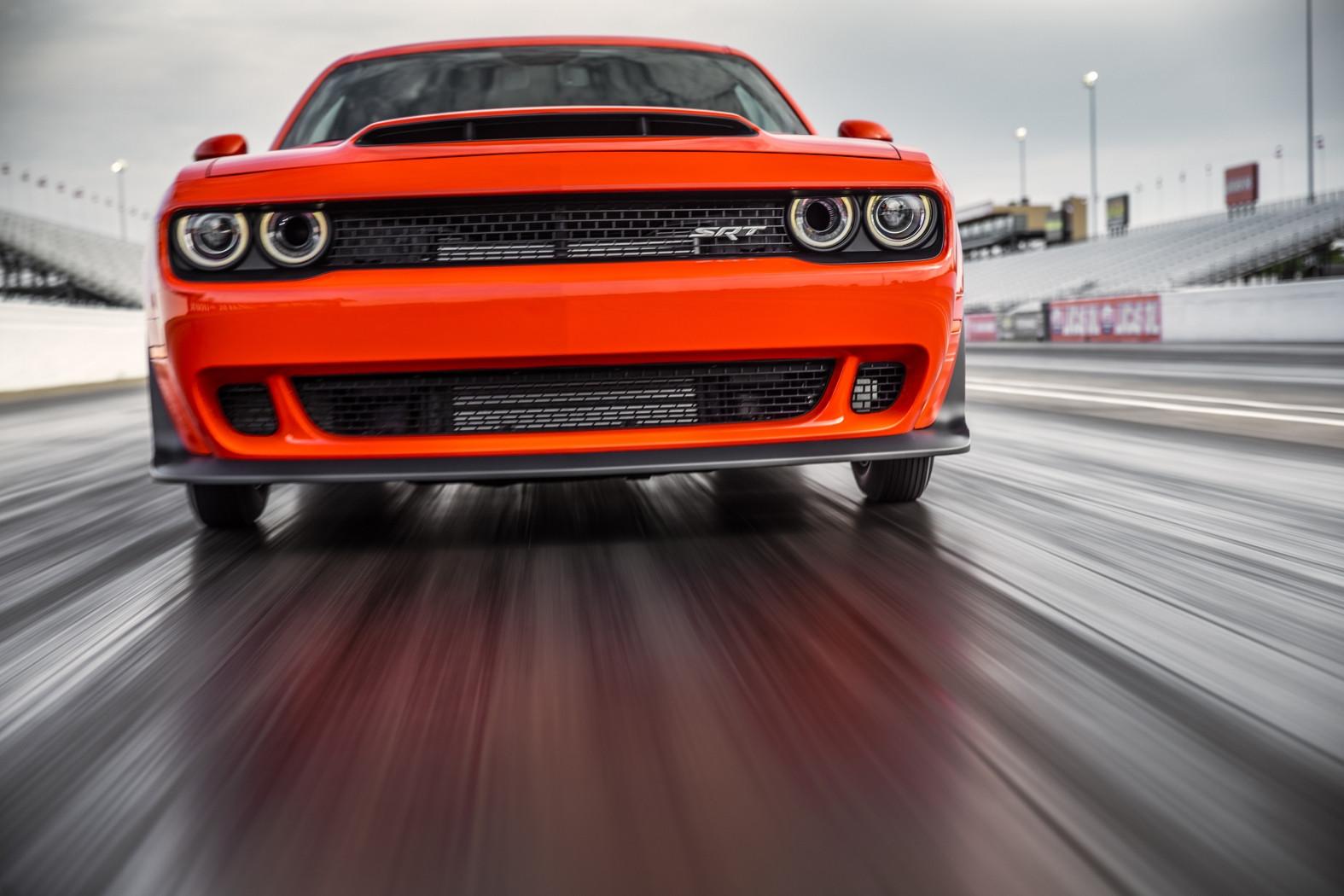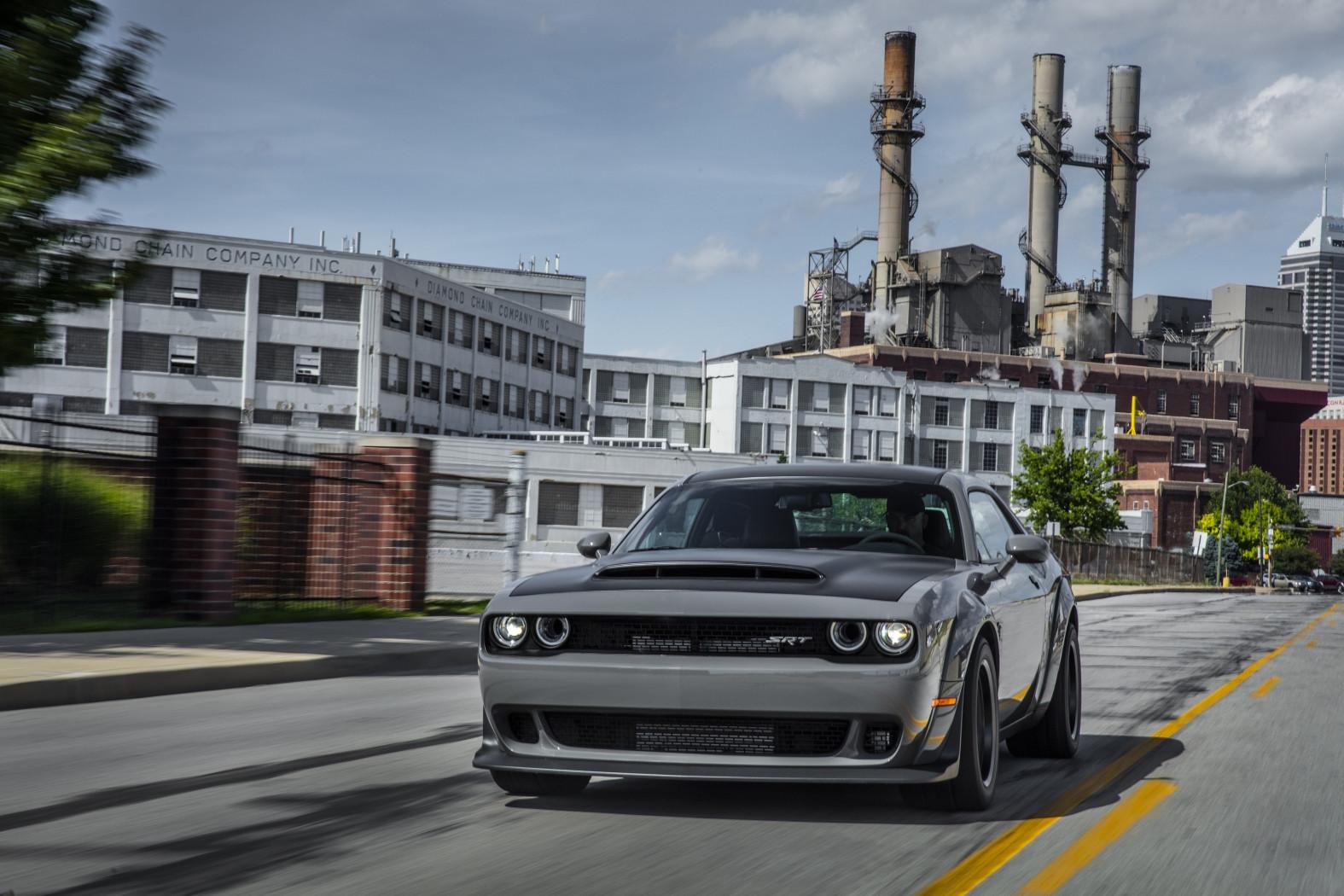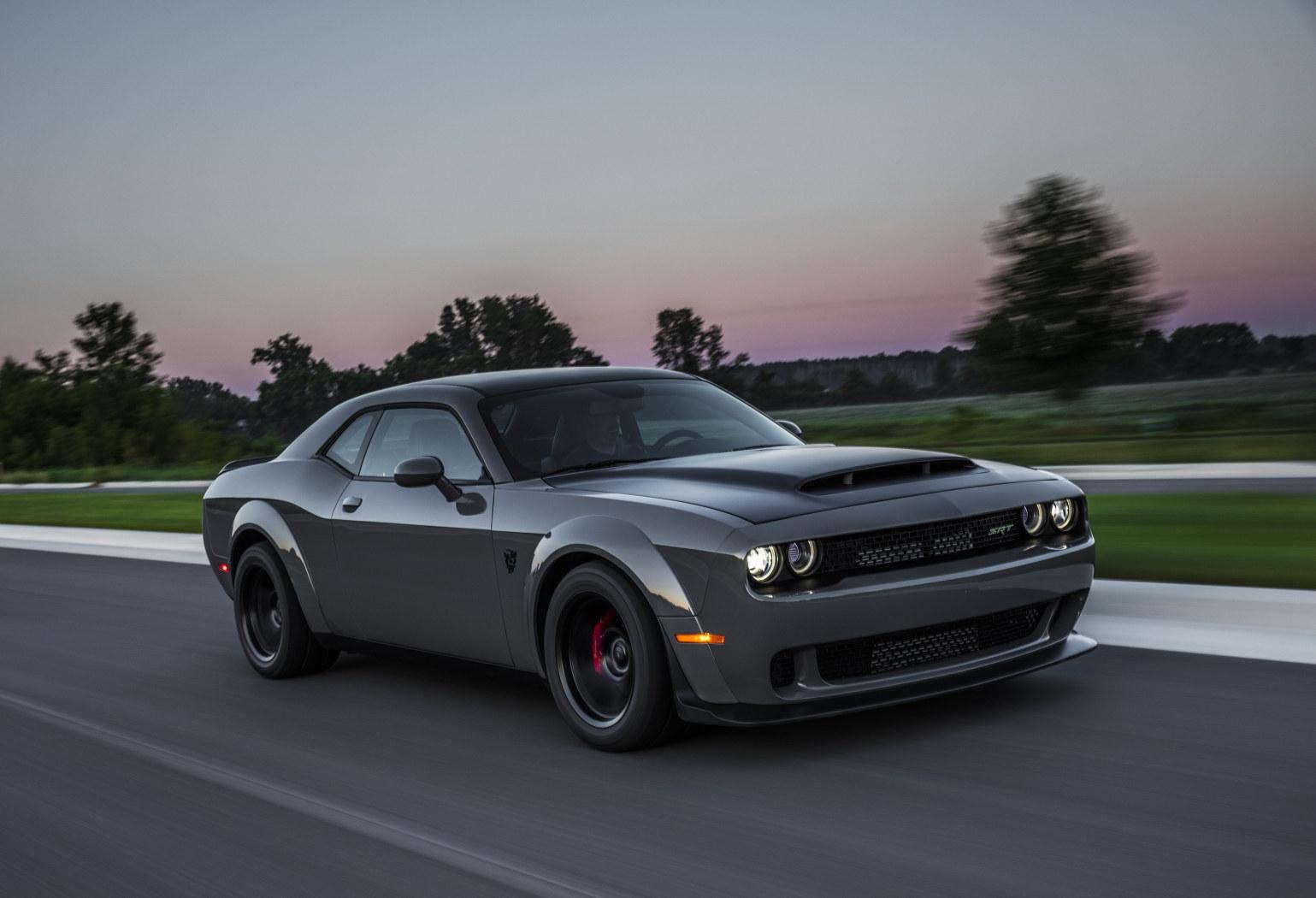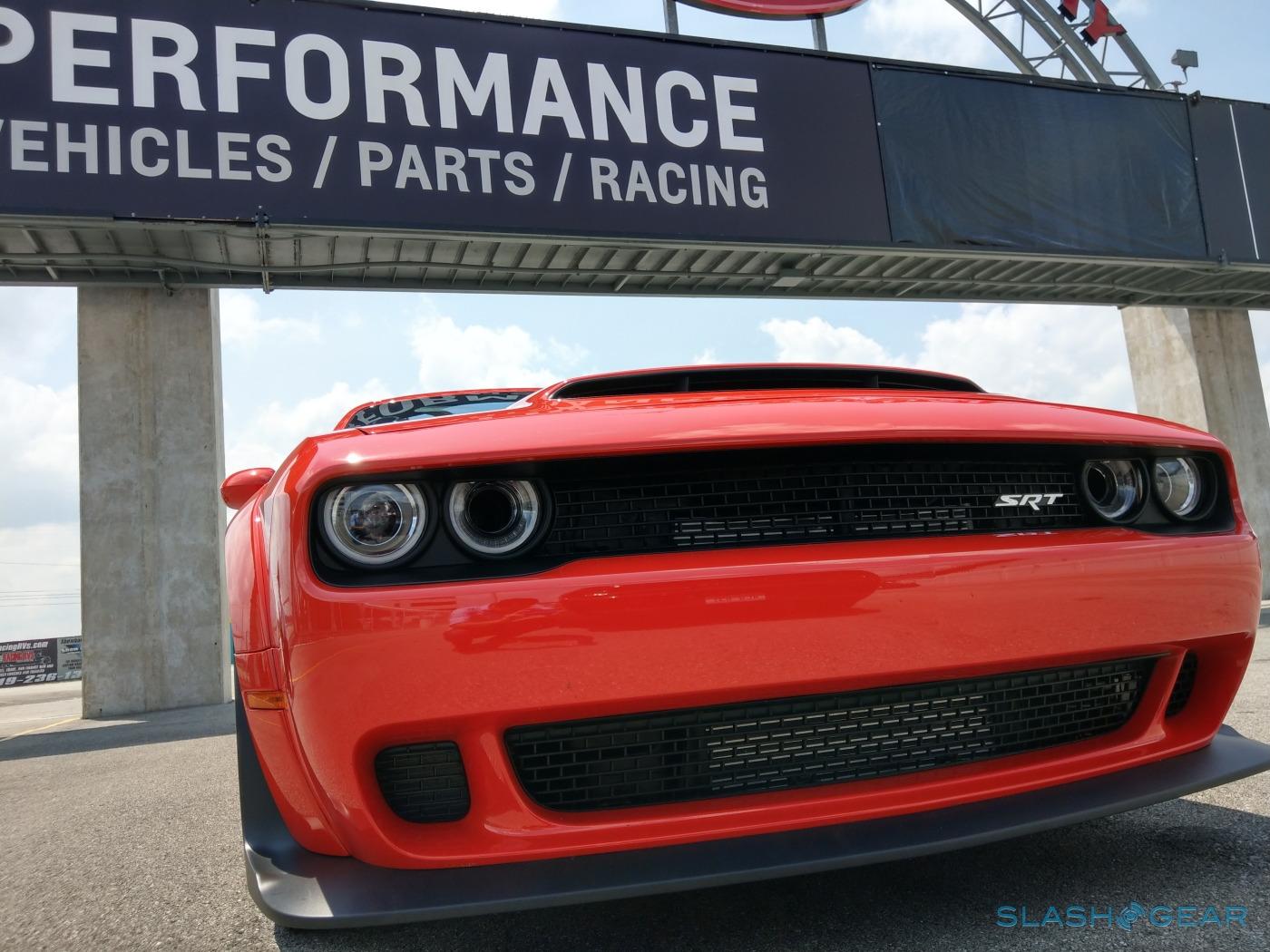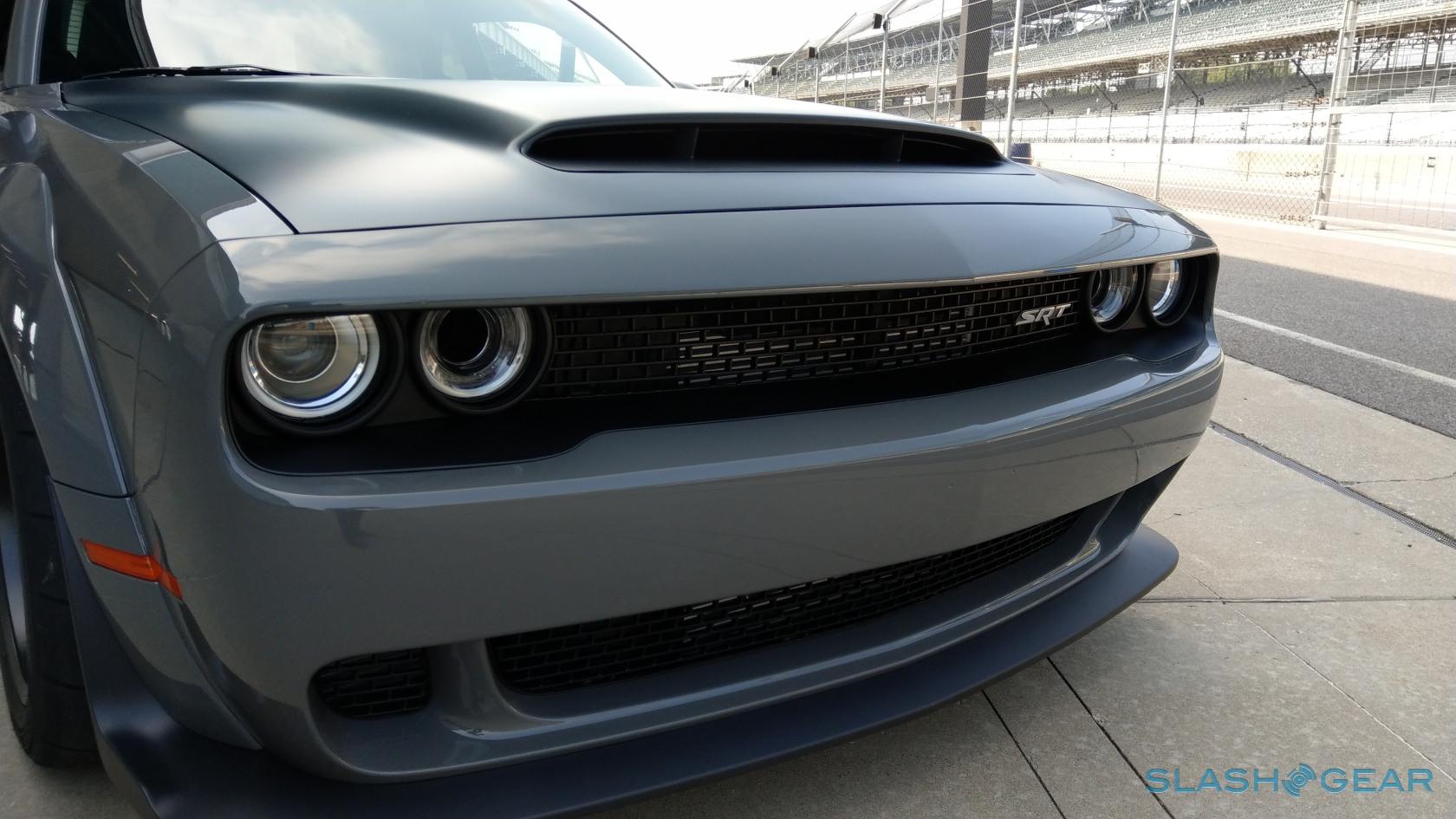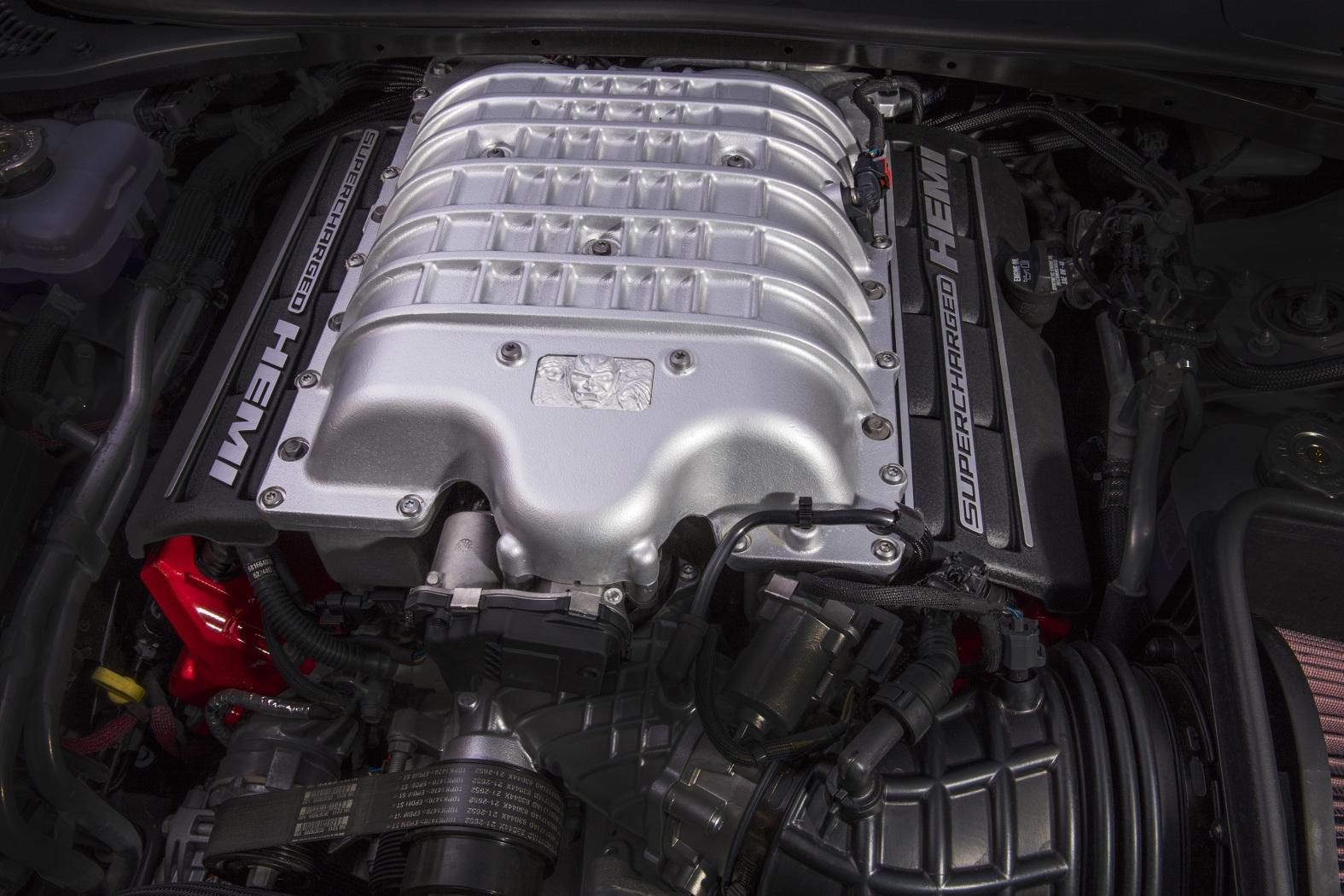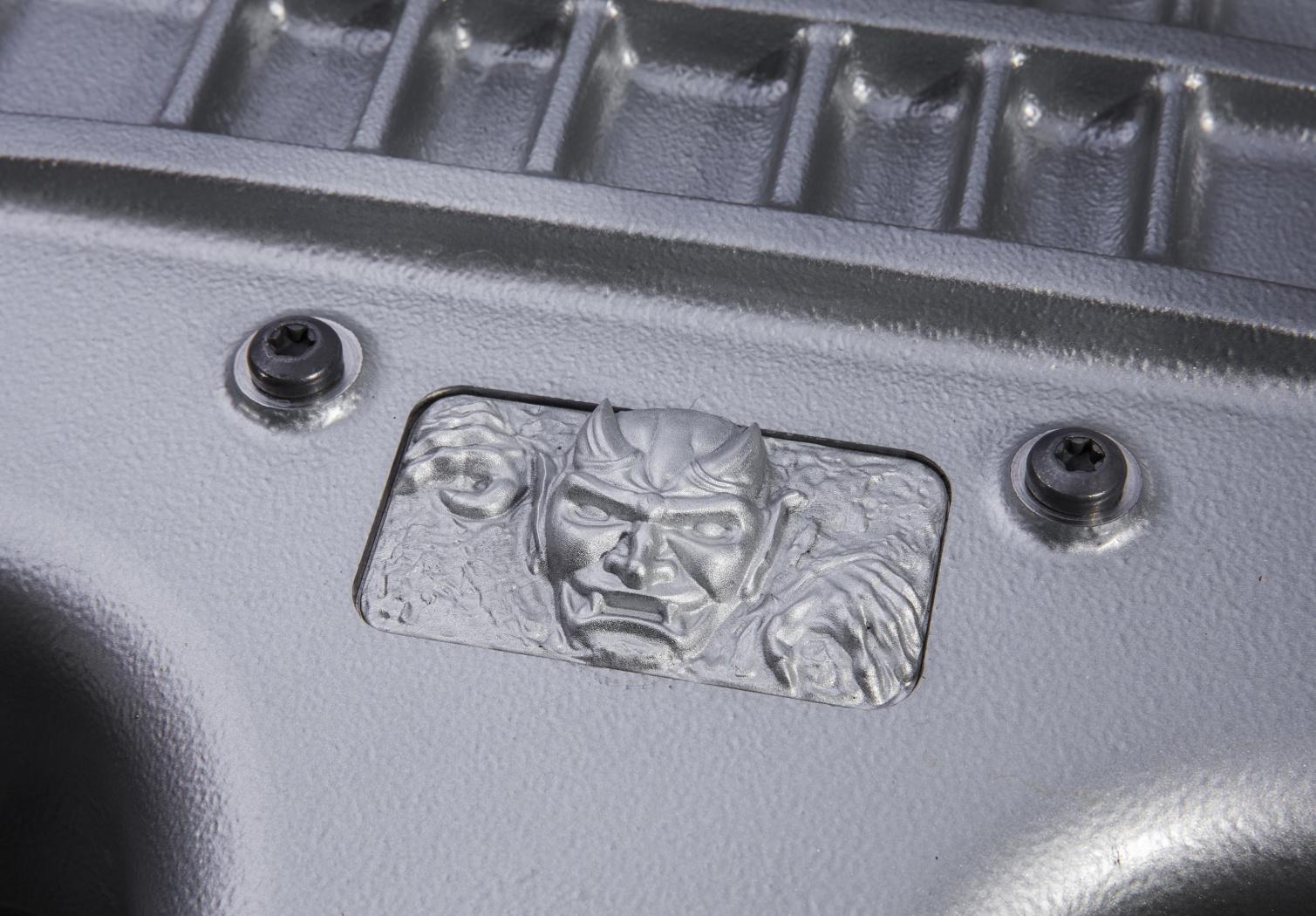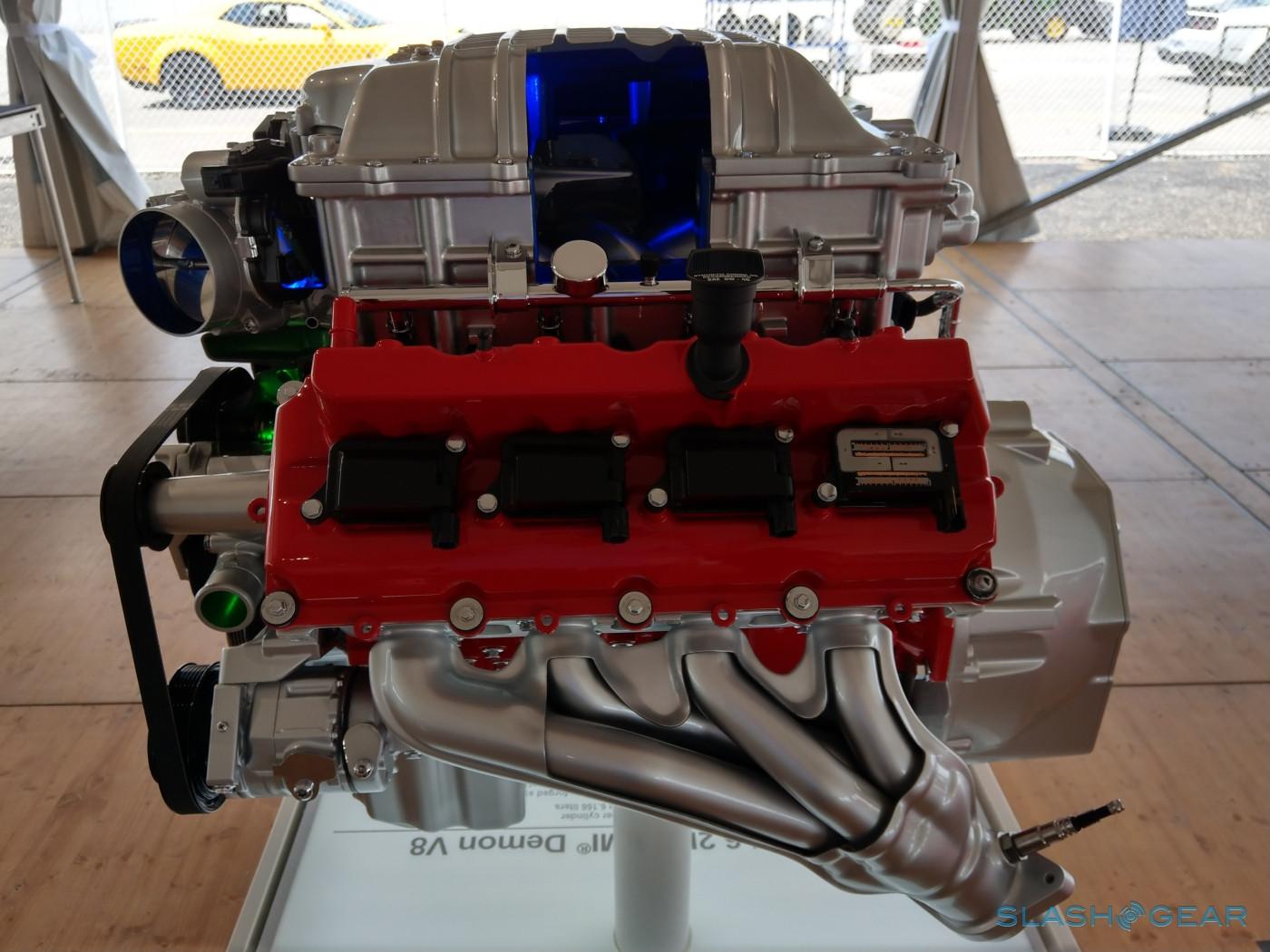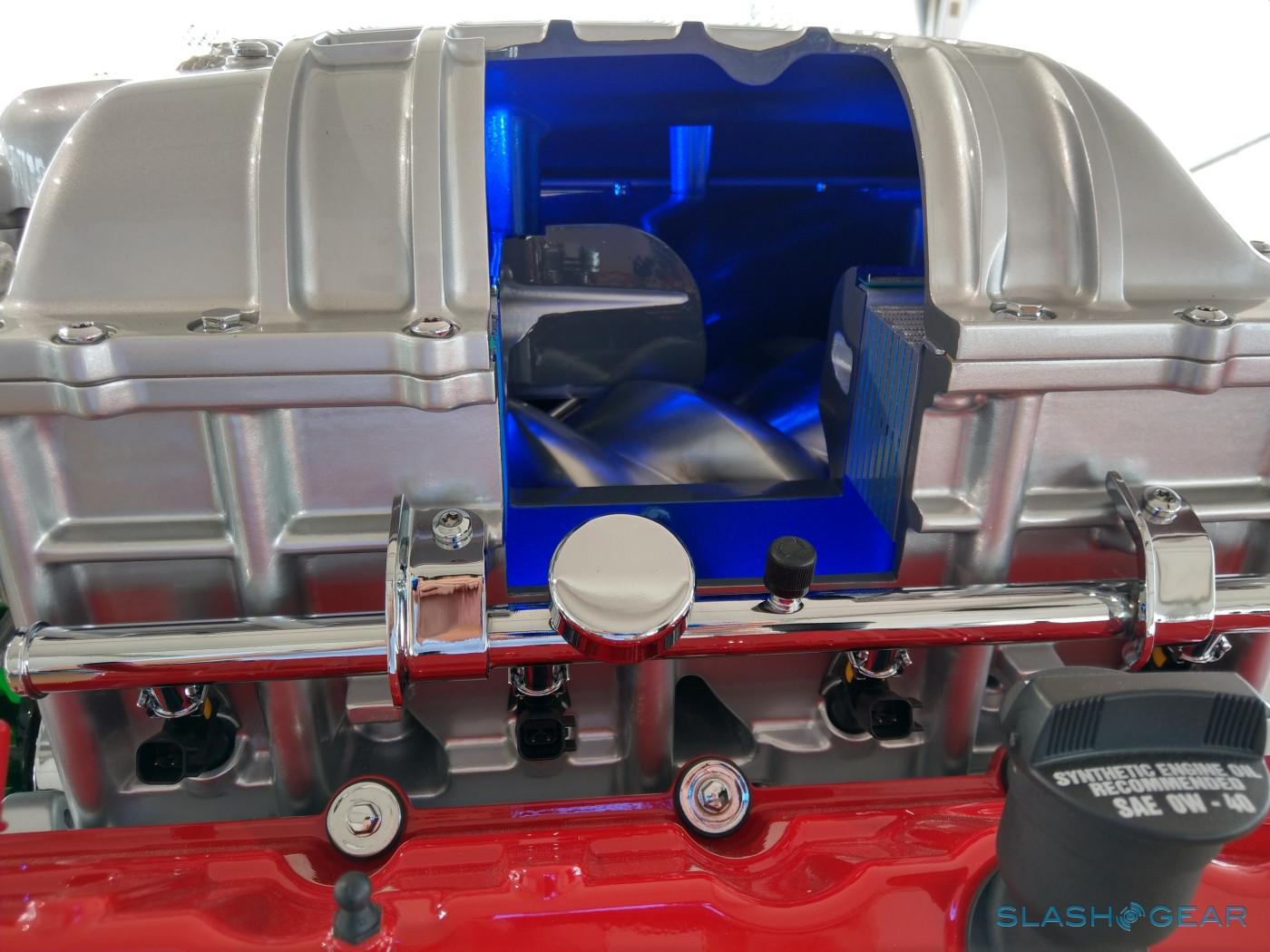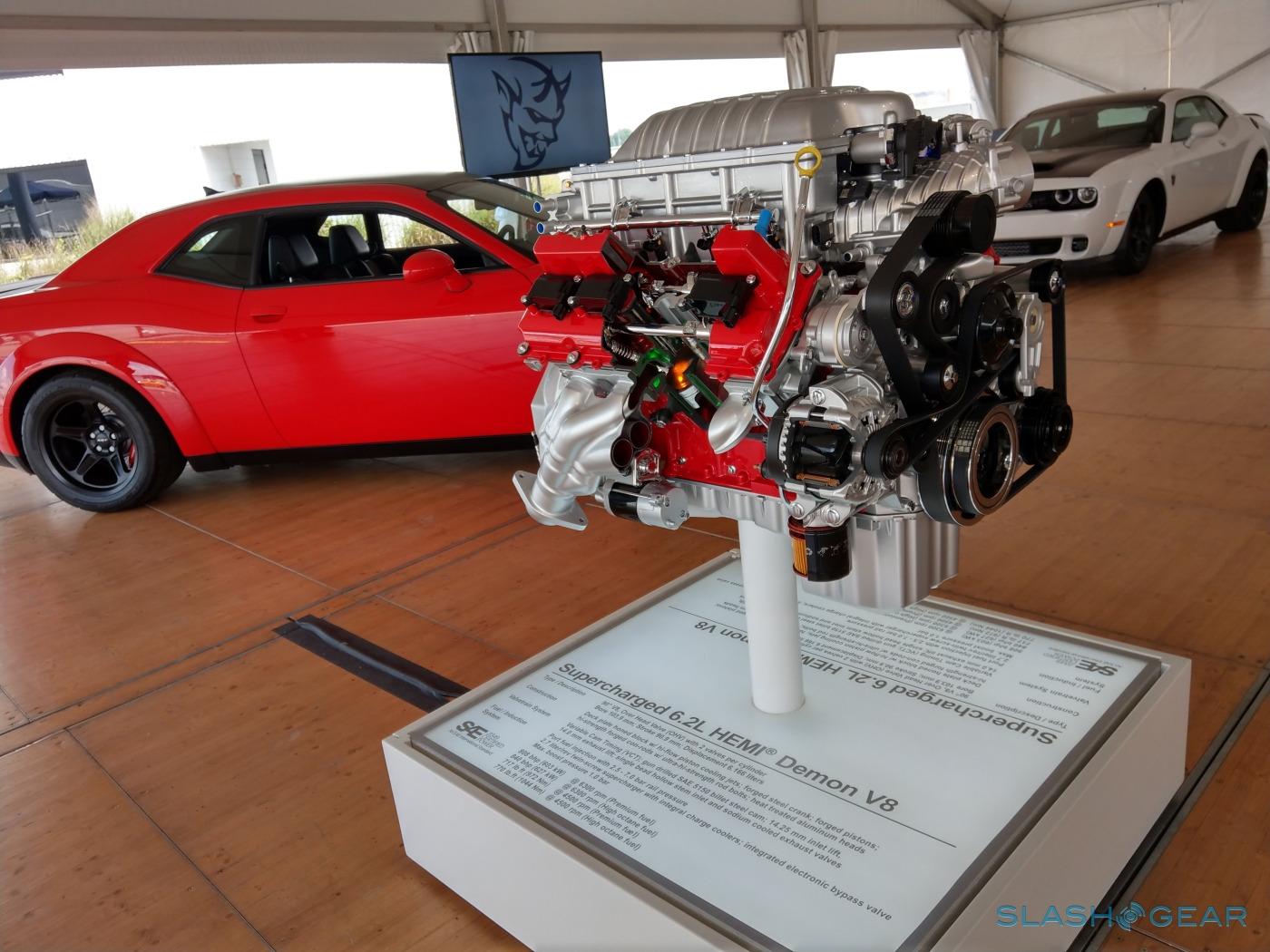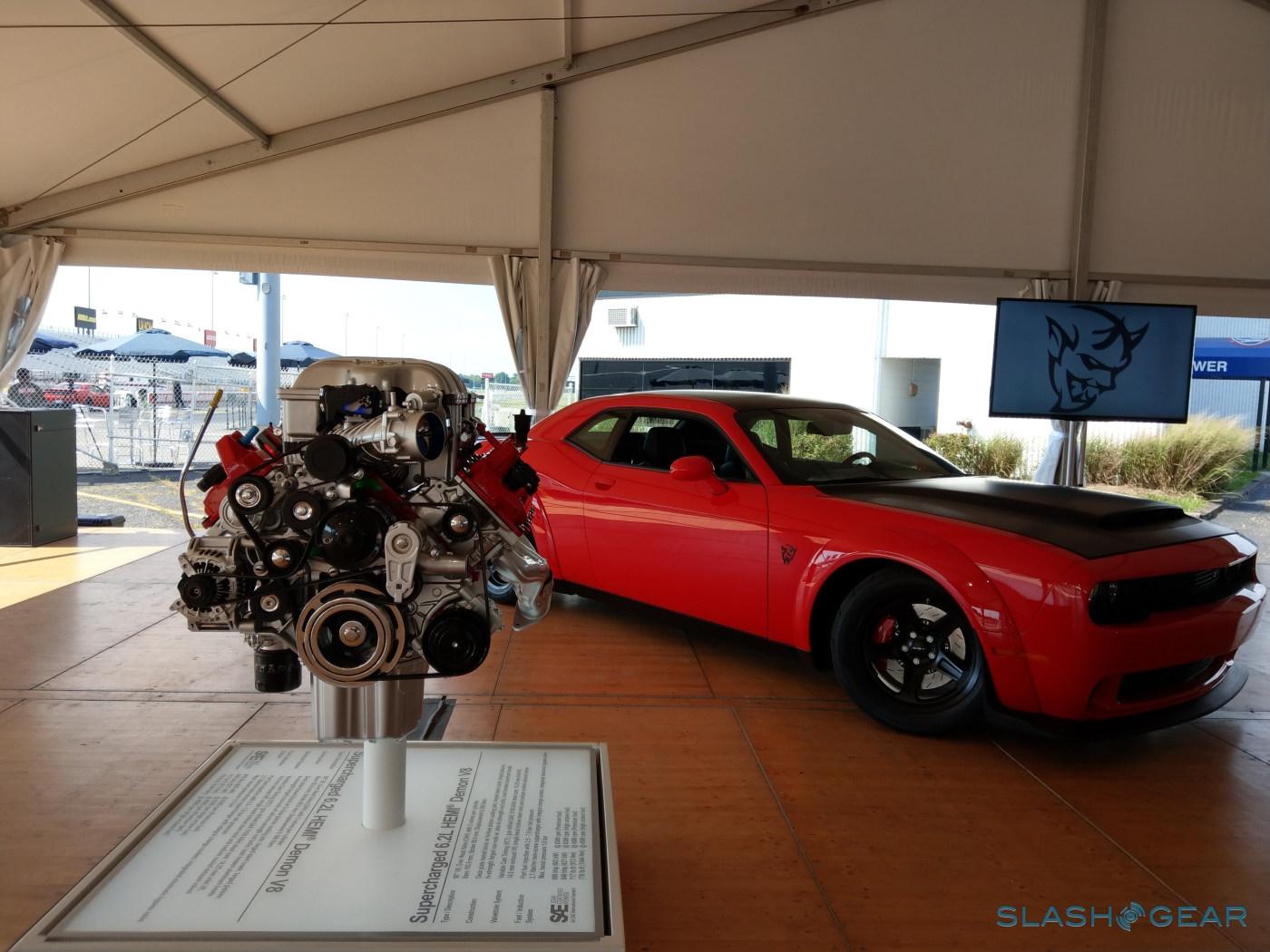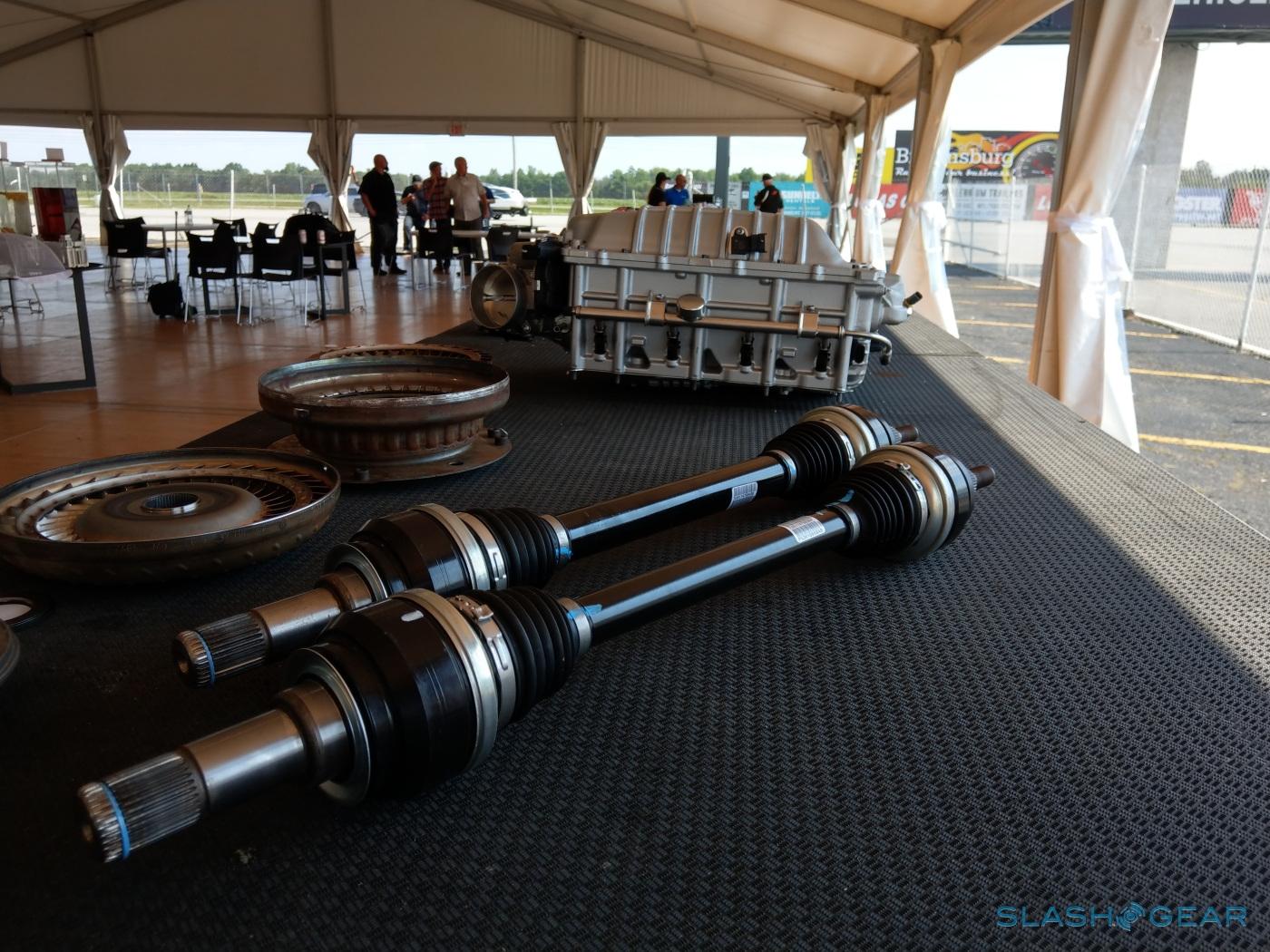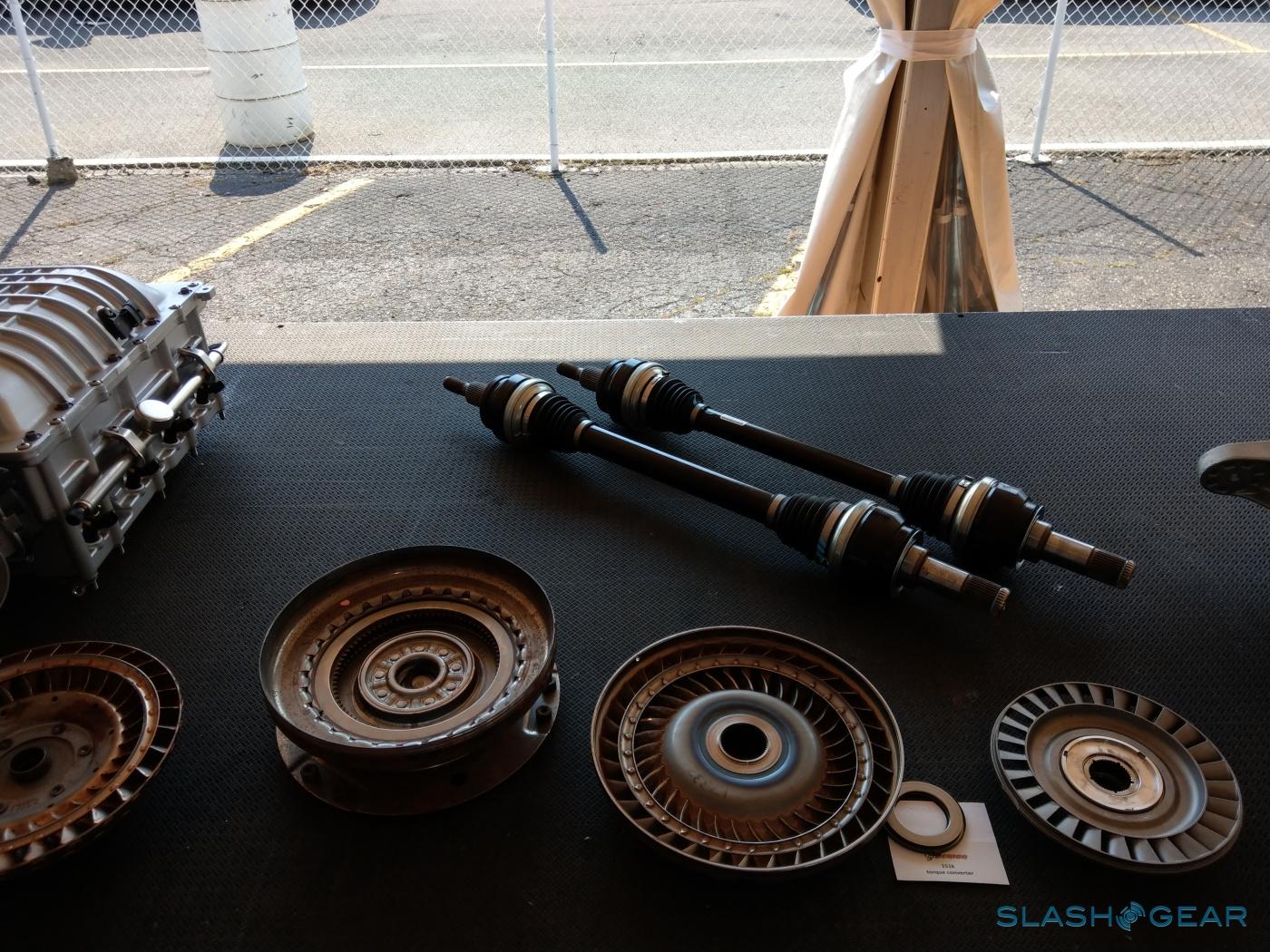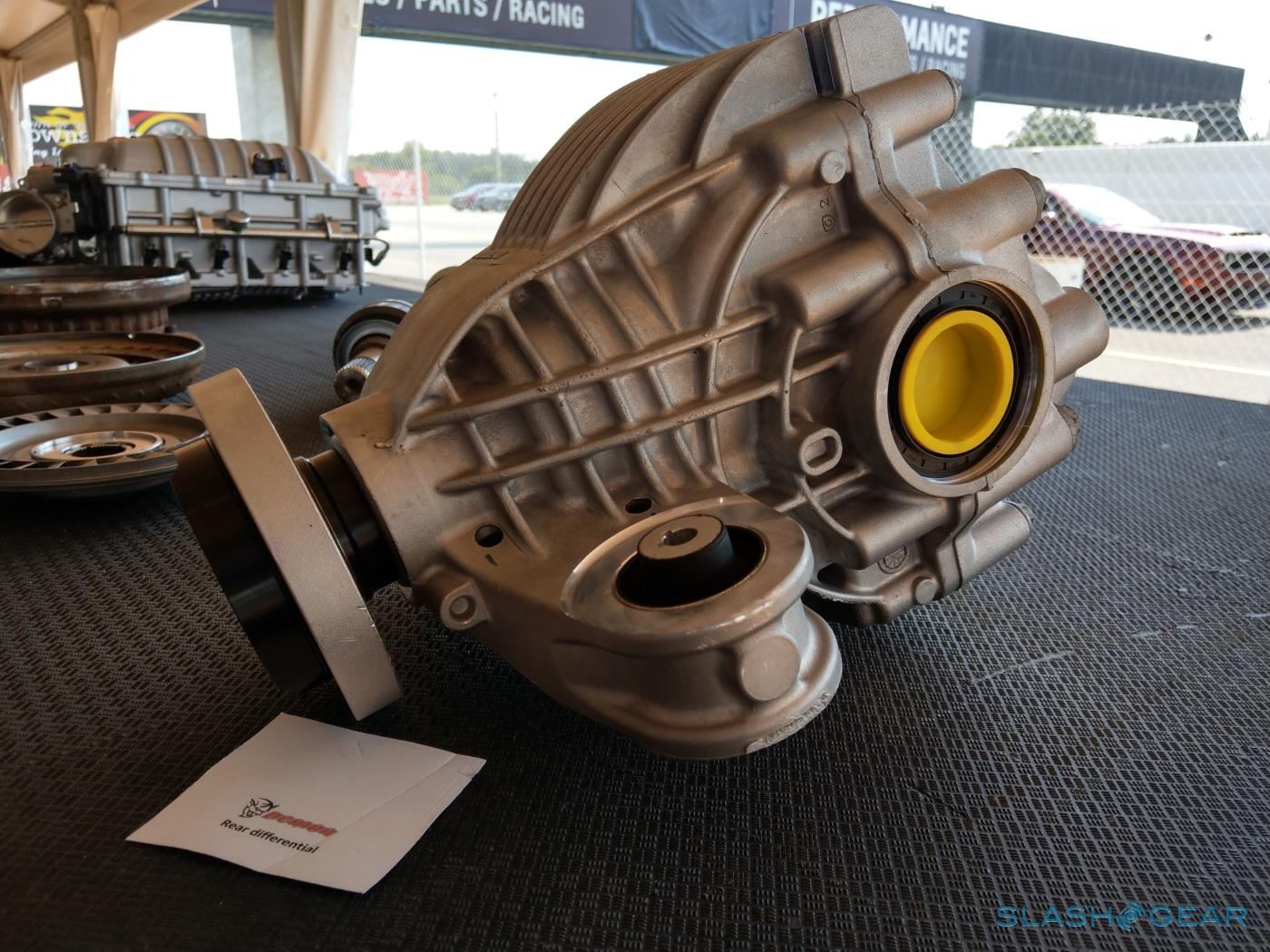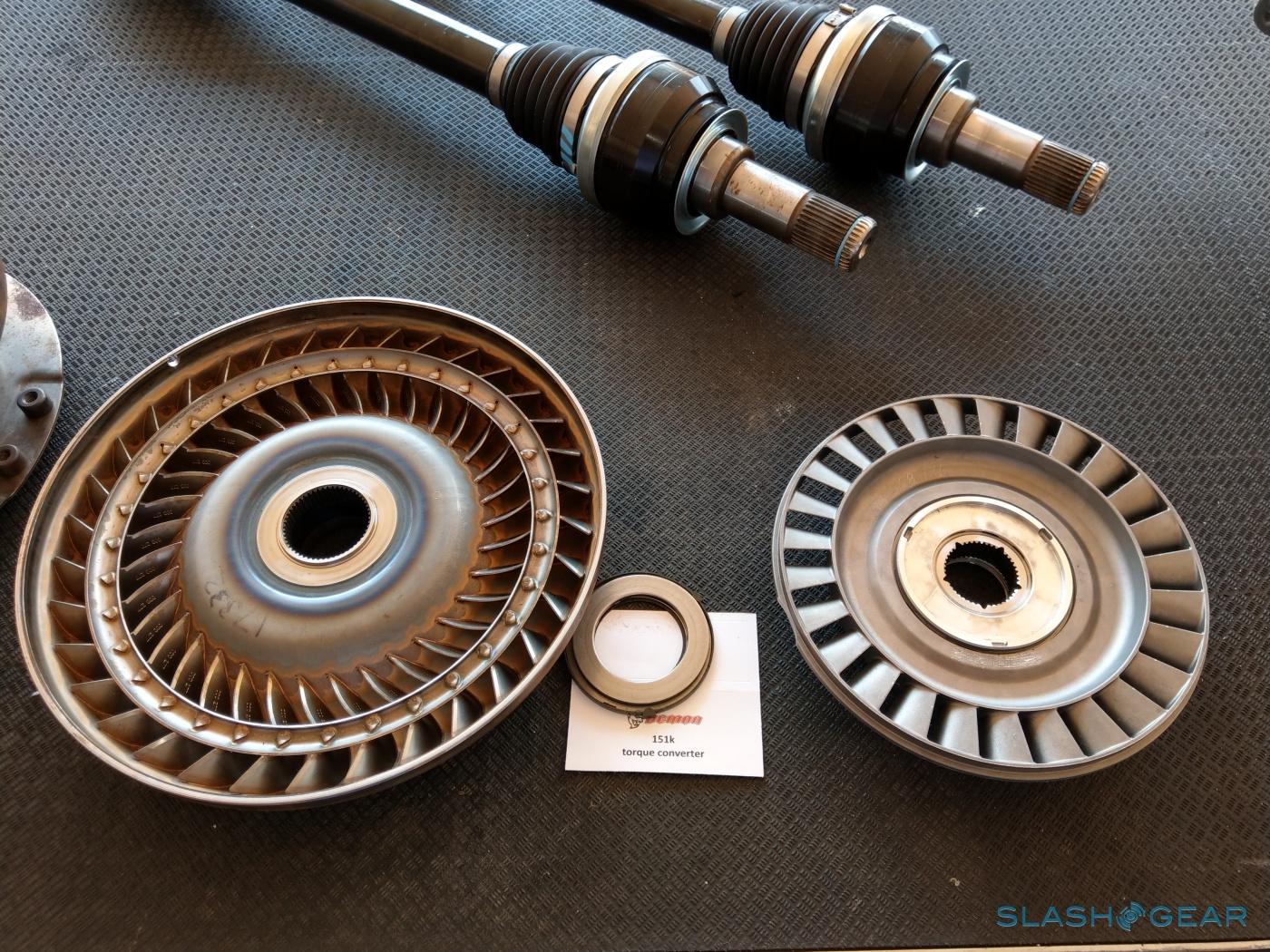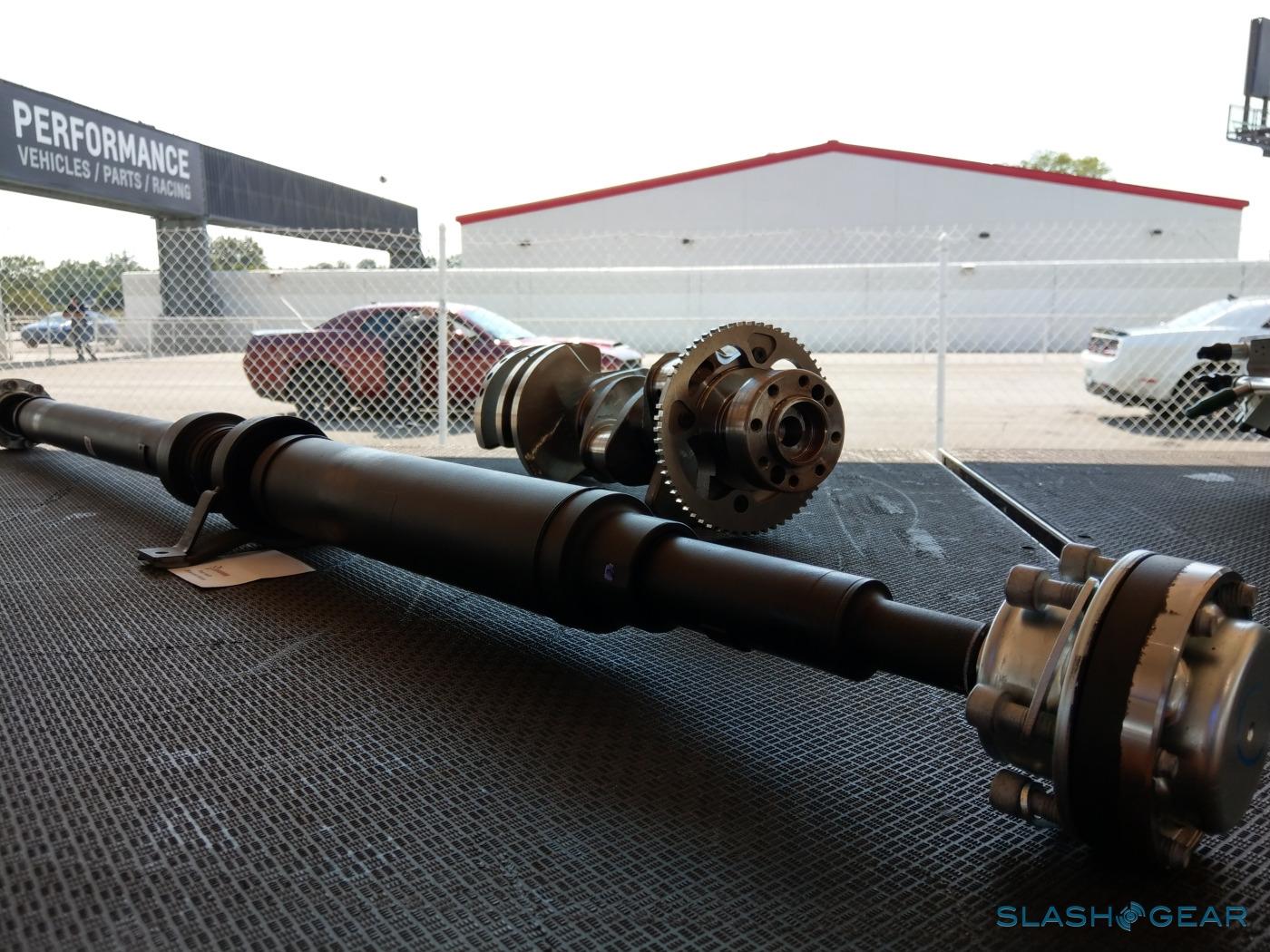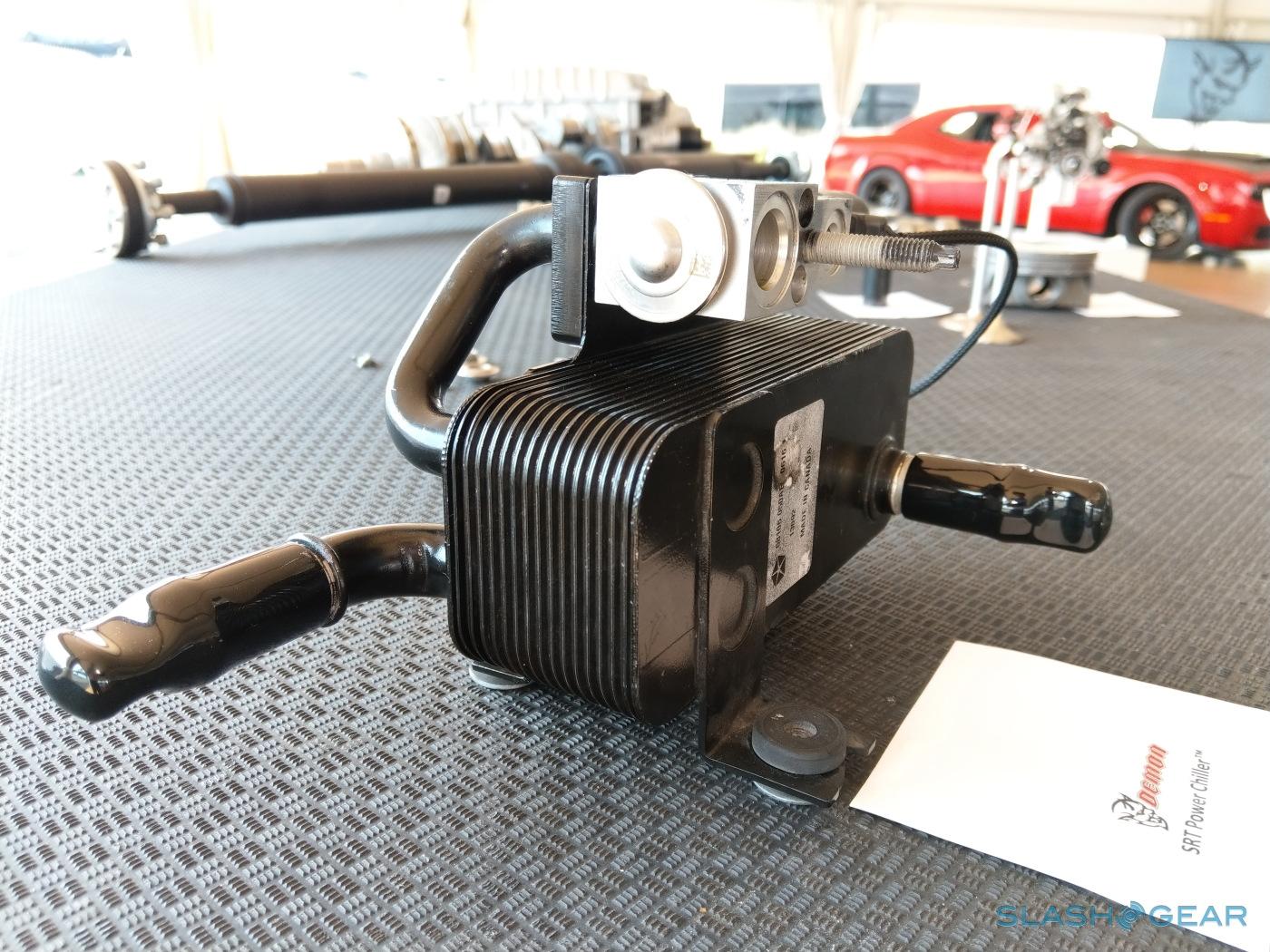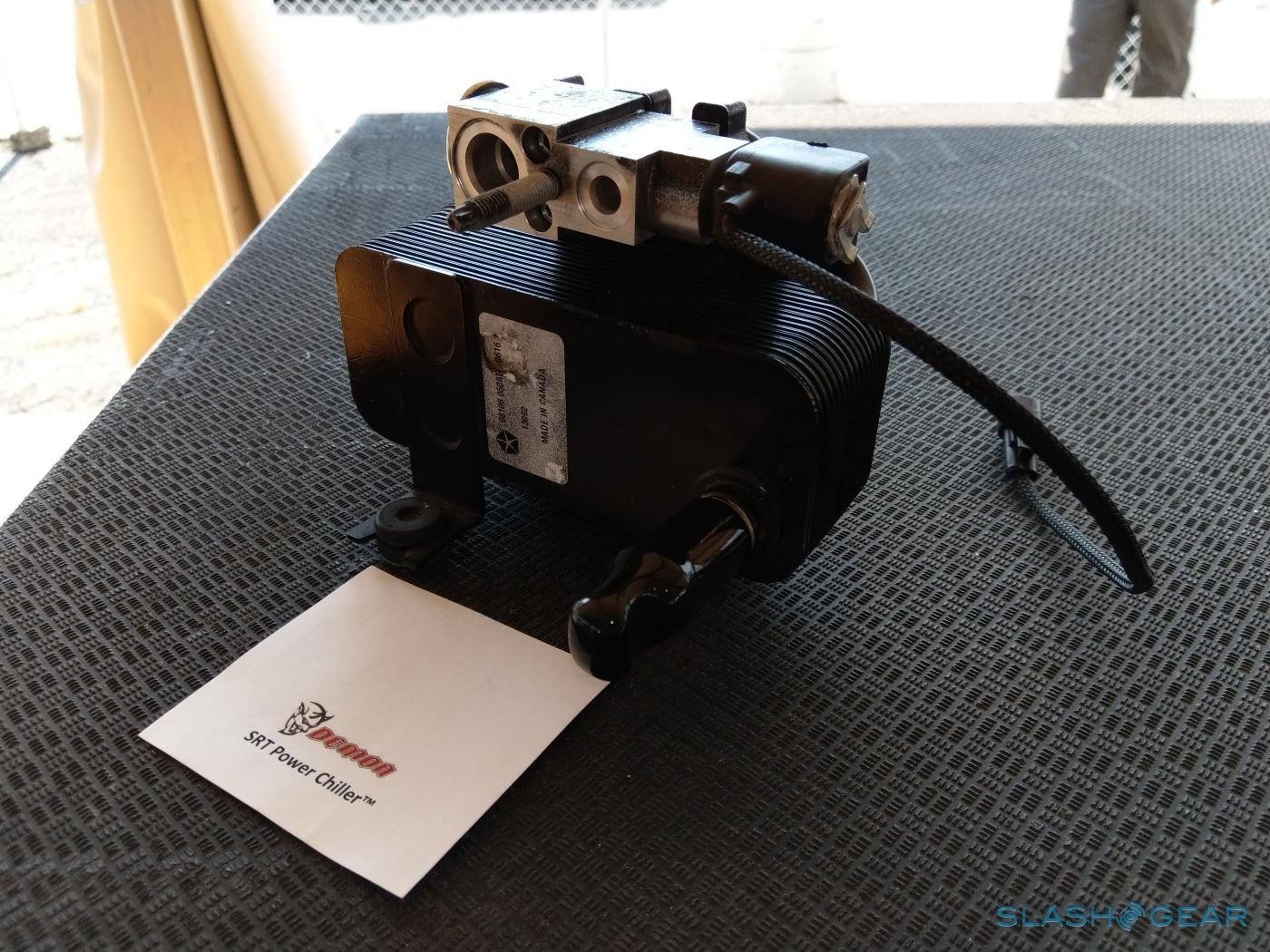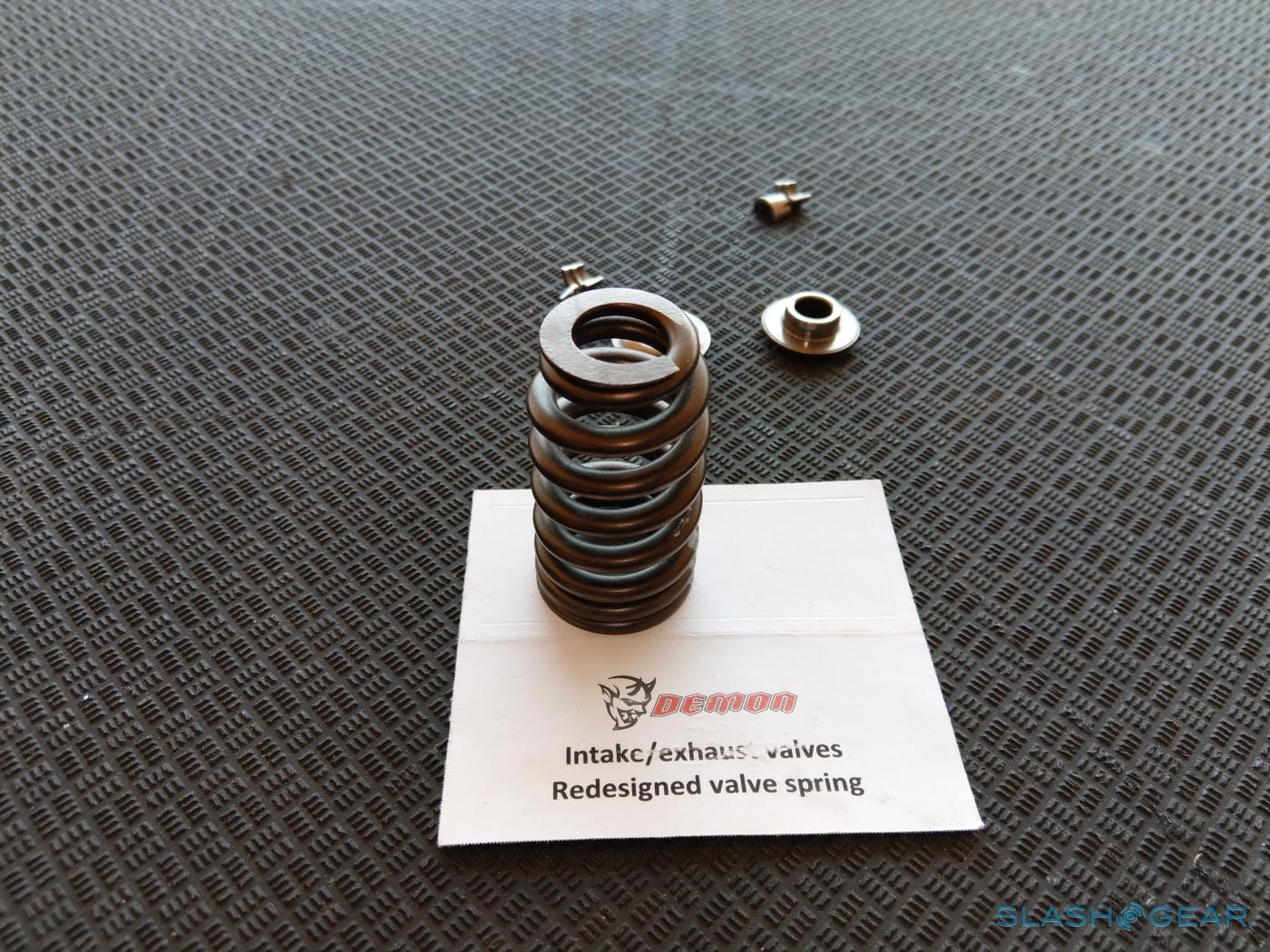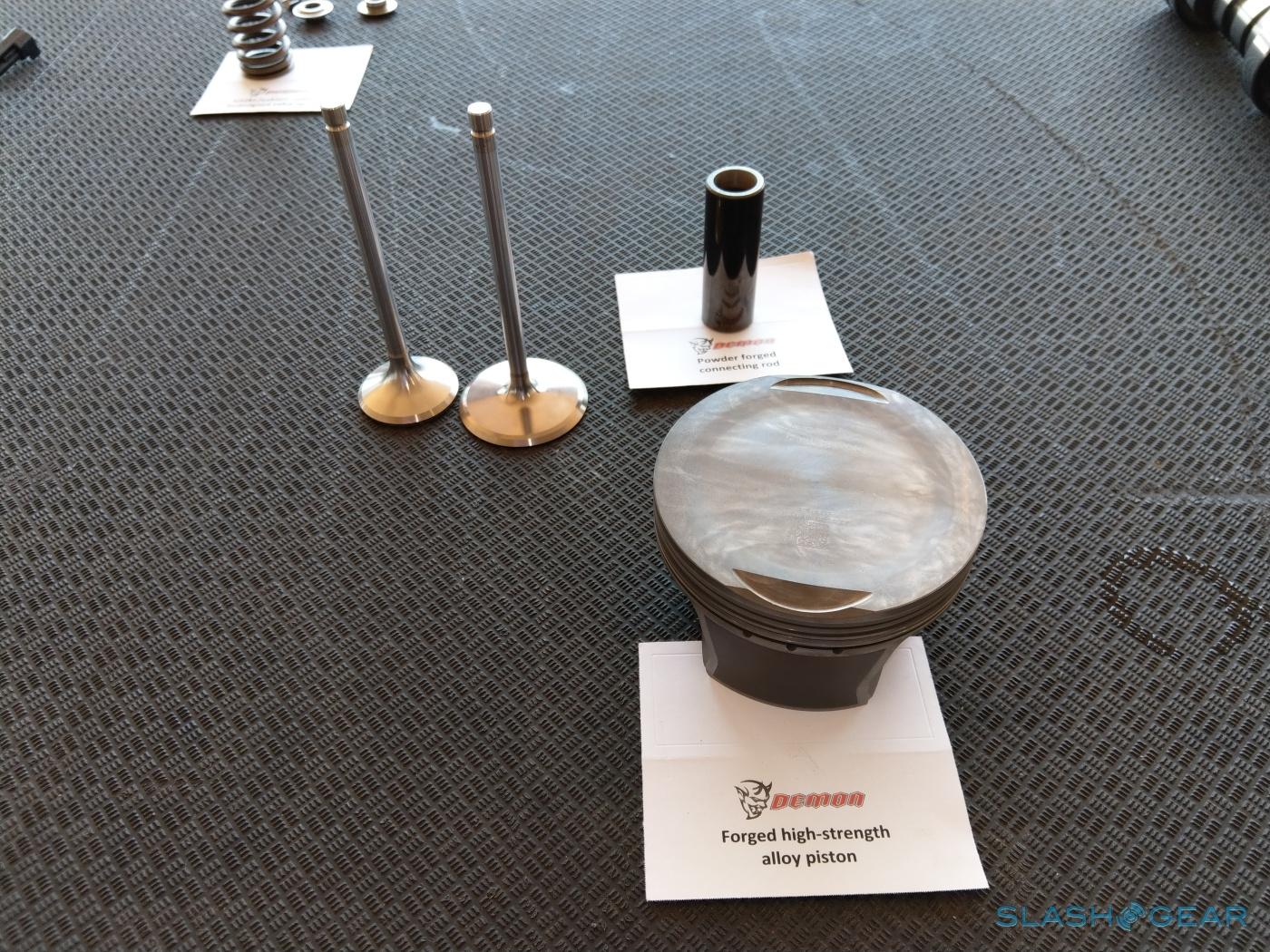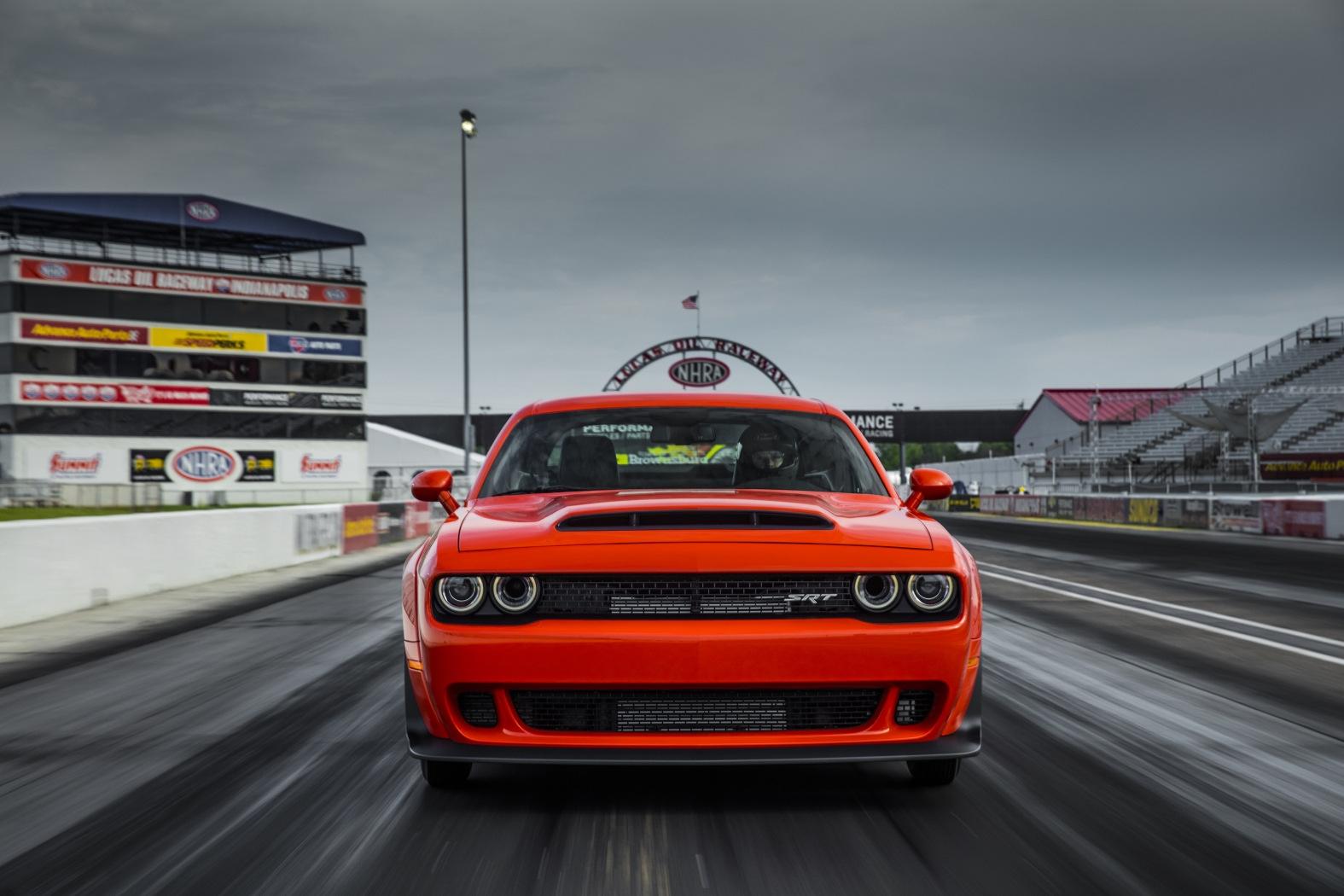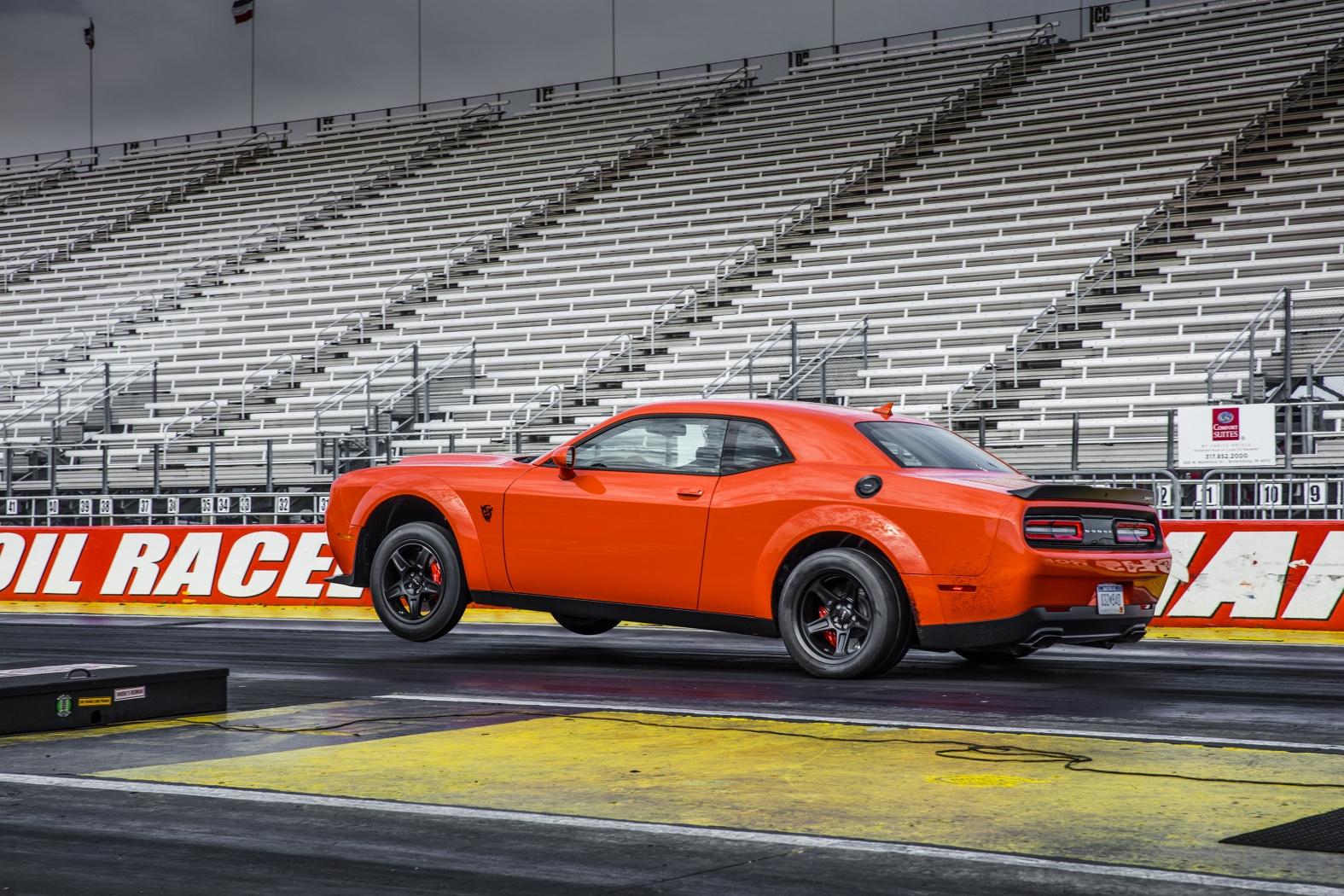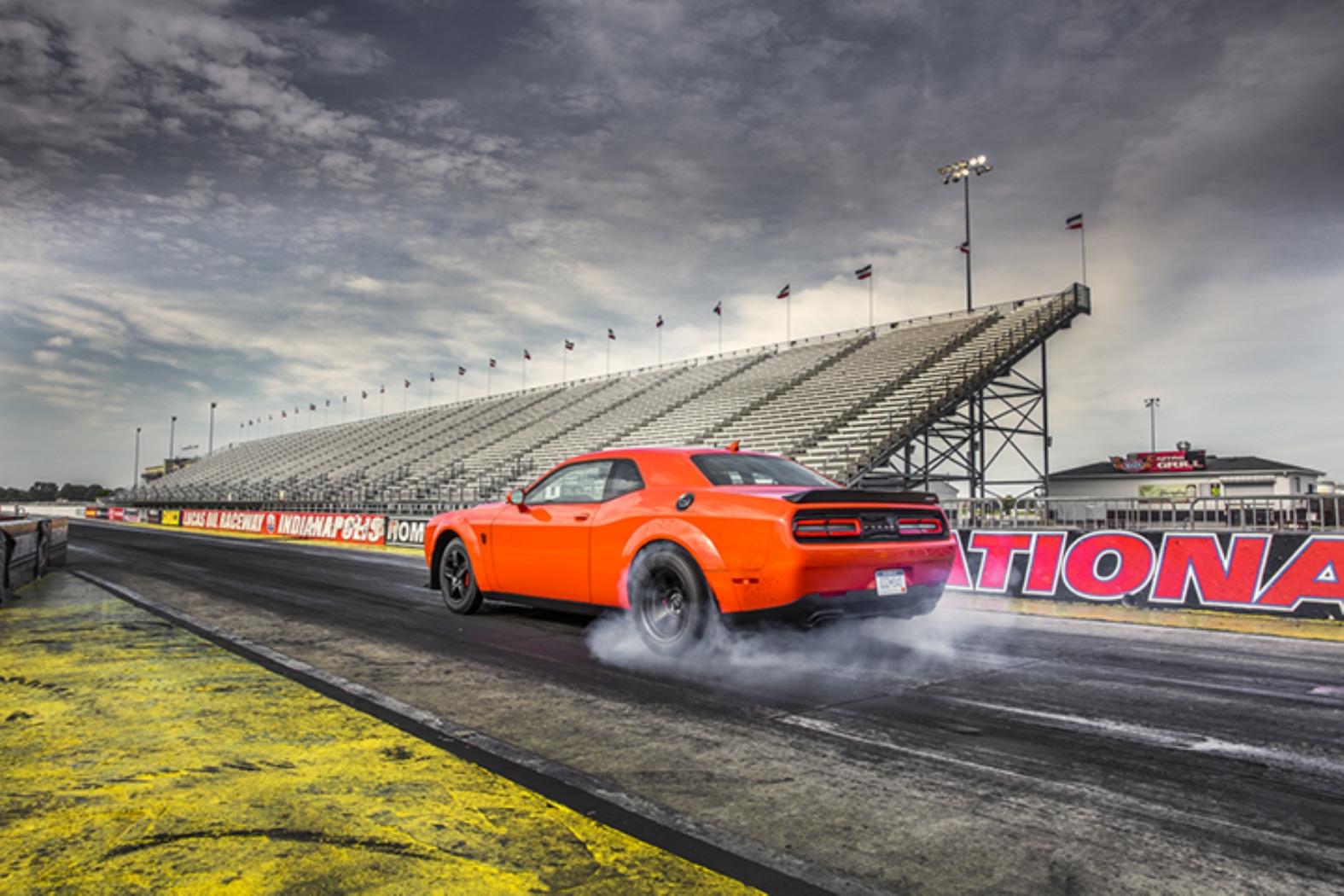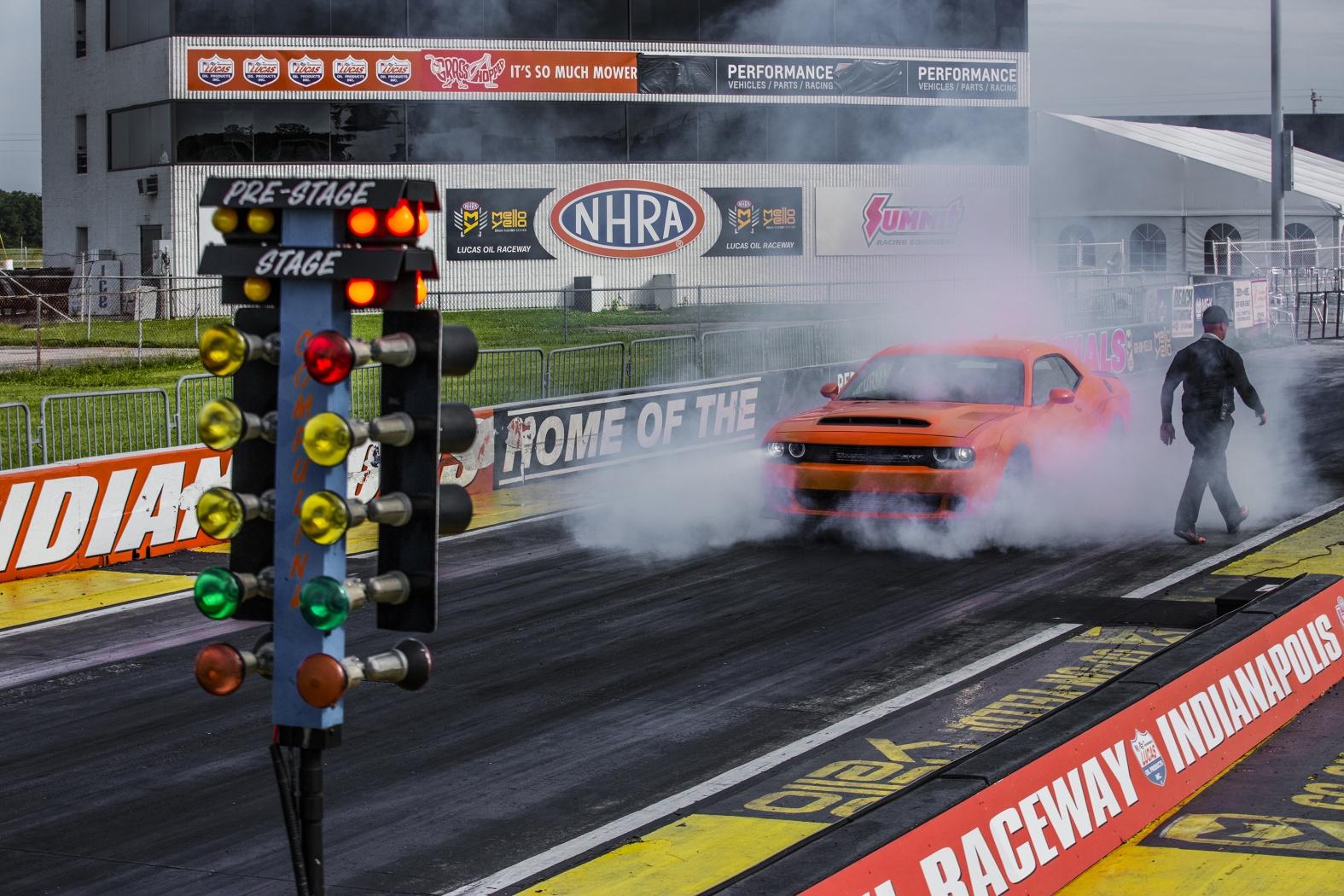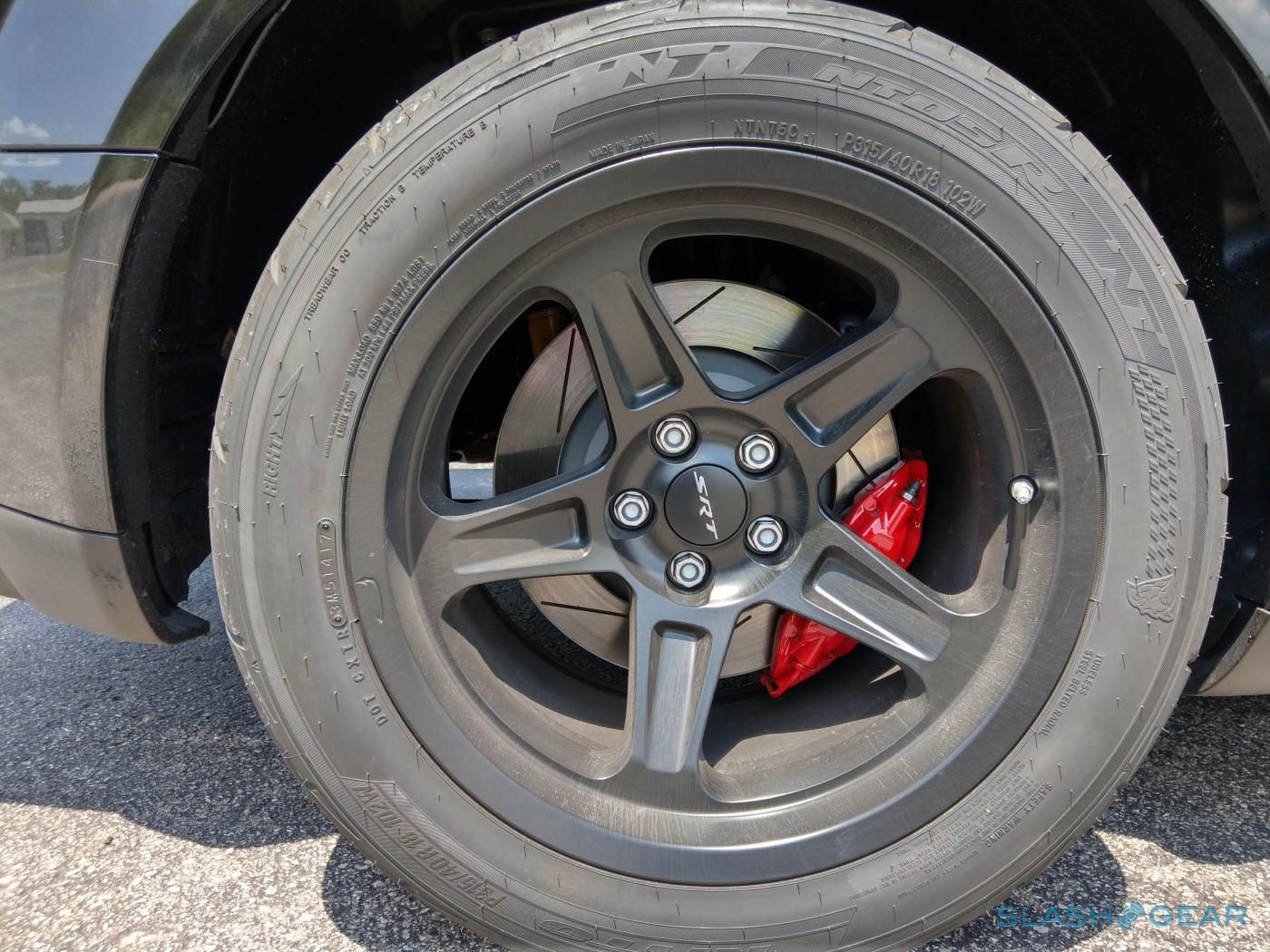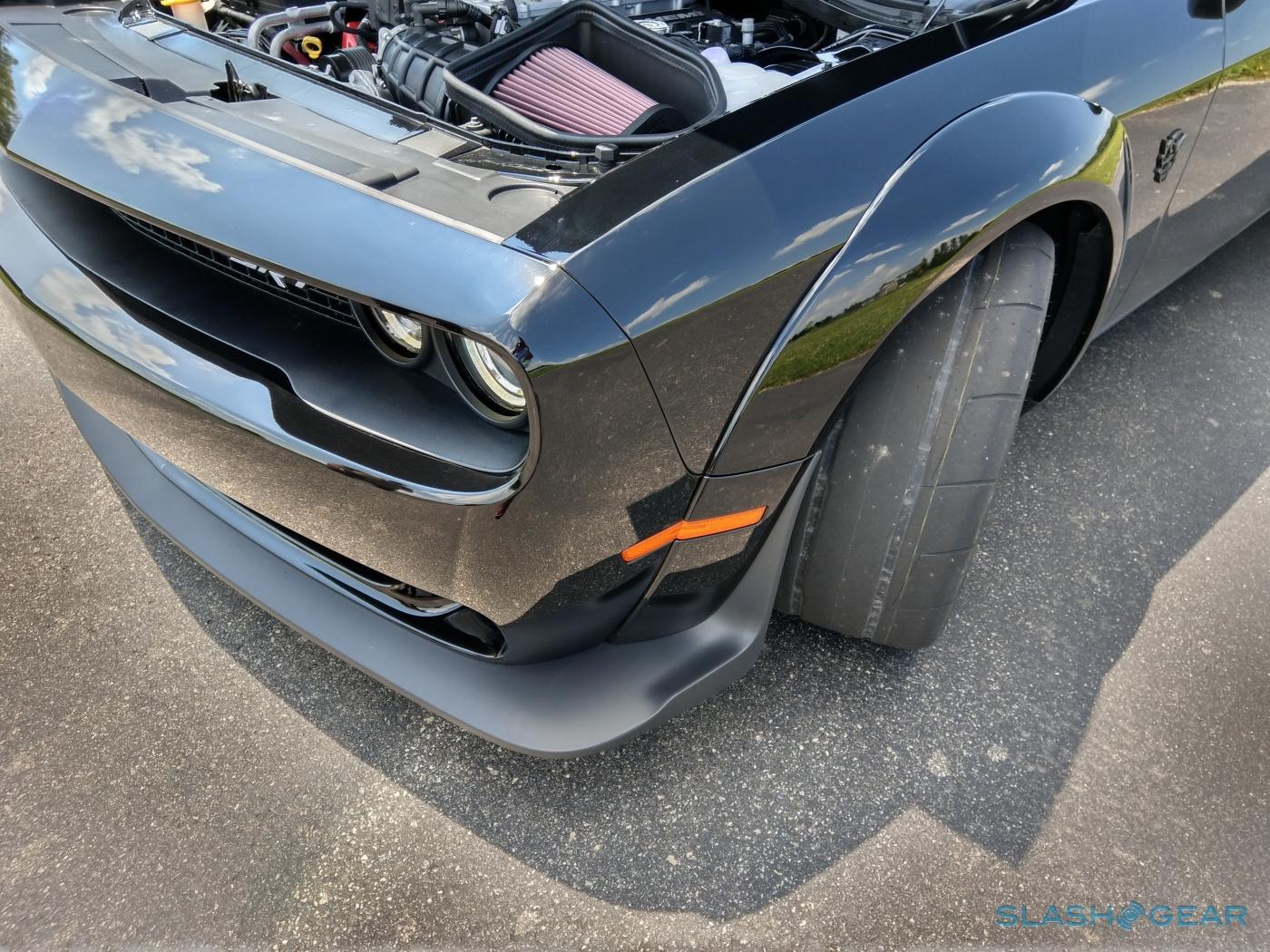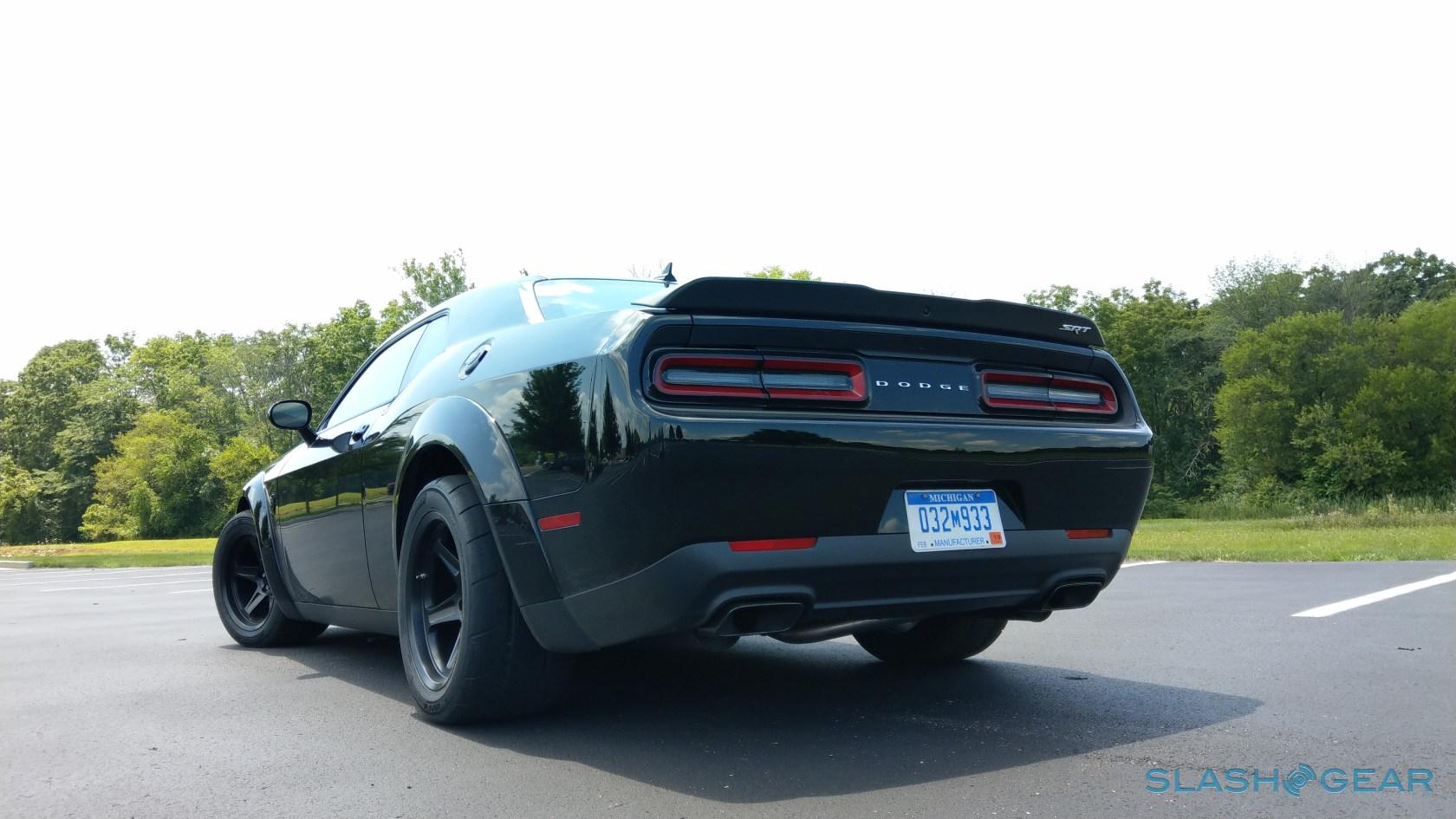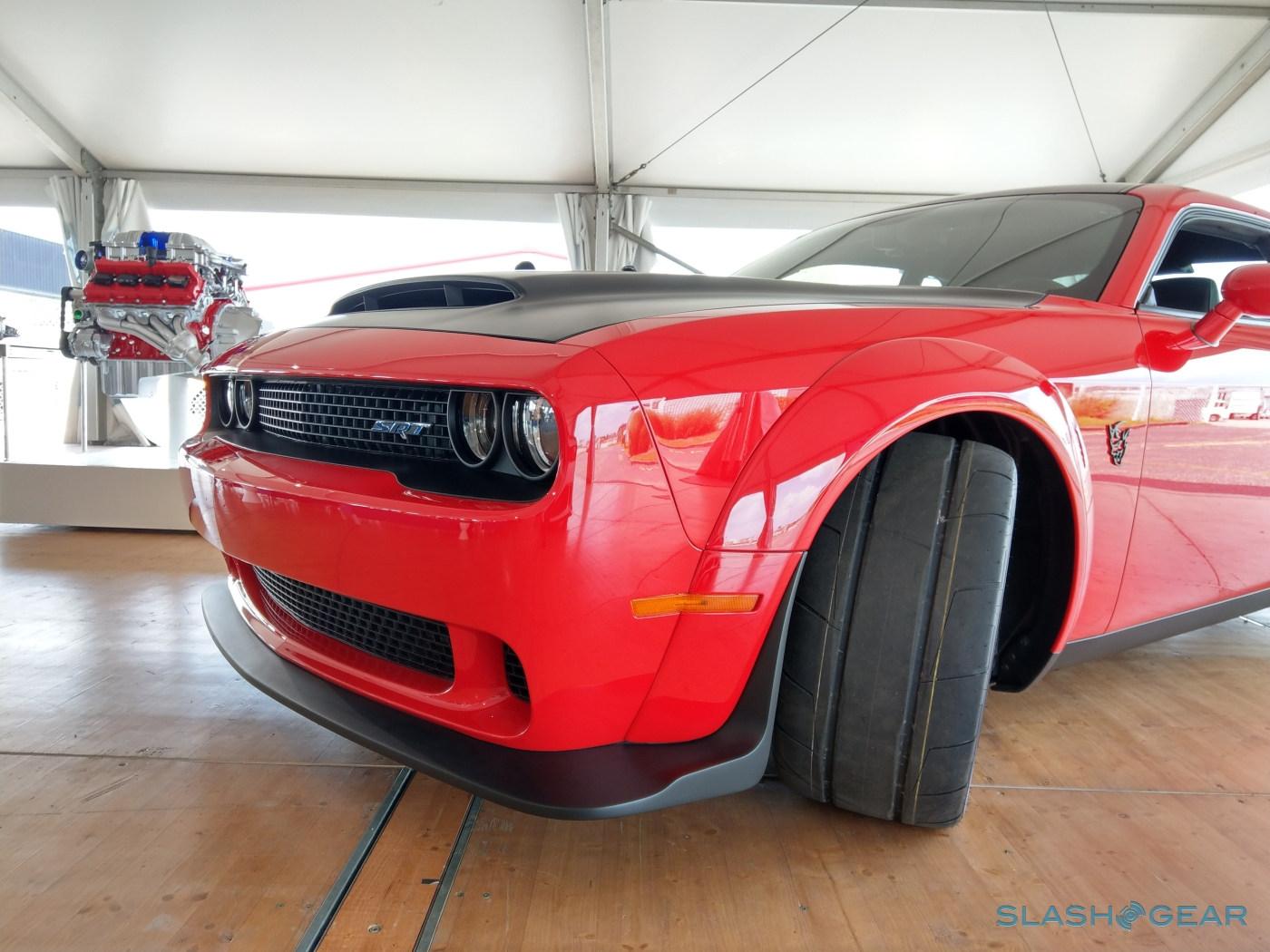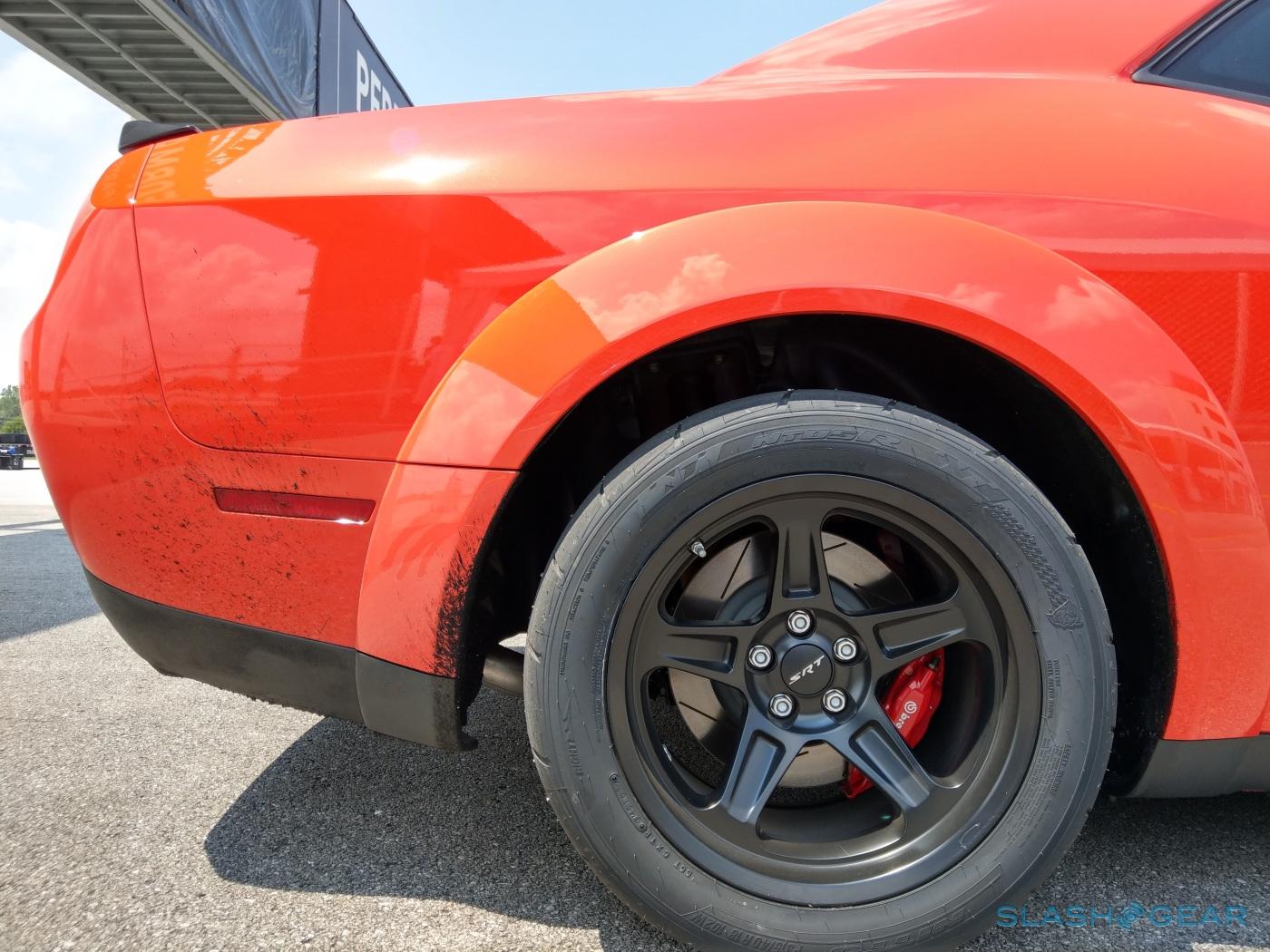2018 Dodge Challenger SRT Demon First Drive Review: Hell On Wheels
I'm sorry, you're called what? The Demon? The demon of what, you might also ask? It's the torpedo of drag racers, born out an addiction to speed in a straight line, and its singular mission is to obliterate the competition on any drag strip. The specs say that the 840 HP V8 can propel this particular 4,275-pound missile from 0-60 mph in 2.3 seconds, and hammer out the quarter mile in 9.65 seconds at 140 mph. This is the world's fastest production car, and it's wearing an American badge.
Experiencing the Demon's raw power first hand left me in awe, but after seeing my colleague's results for one of his best runs of the day – 0-60 mph in a spec-matching 2.3 seconds – I was just short of losing my mind. Actually hitting the on-paper numbers demand ideal conditions, of course, including yanking out the front and rear passenger seats for weight savings, and a proper launch. Dodge will take care of the seats for you, or alternatively sell you space for the kids in the back for $1 should you really want them.
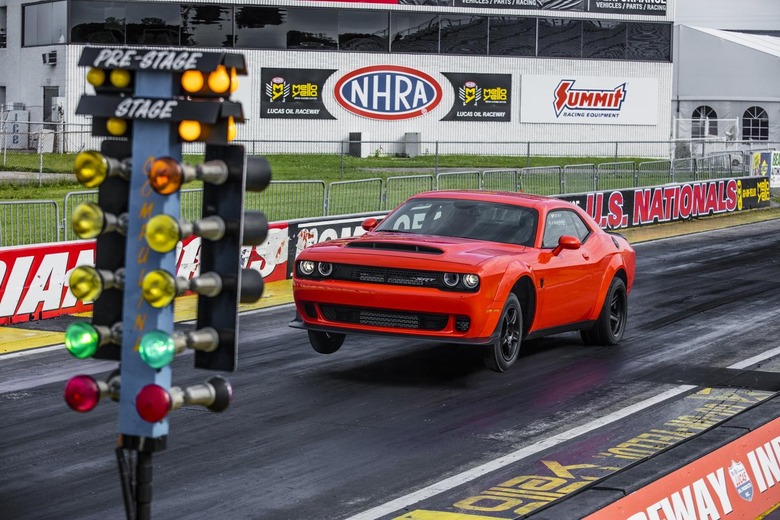
The Demon might be how this car is best known, but it's actually familiar metal. In fact, the Dodge Challenger SRT Demon – to give it its full title – is an evolution from the head turning, super-successful muscle car, the Challenger SRT Hellcat. That remains one heck of a muscle car, powered by a 6.2-liter Hemi supercharged V8 and capable of cranking out 707 HP and 650 lb.-ft of torque.
Good DNA, then, but the Demon has evolved in its own direction, even down to the new logo. According to Mark Trostle, head of Performance, Passenger and Utility Vehicle Exterior Design at FCA North America, the team explored numerous completely new logos but eventually decided to "look at the Hellcat logo, what if we evolved that, what would that turn into, the Hellcat grew into this demonic looking shape, what would it do?"
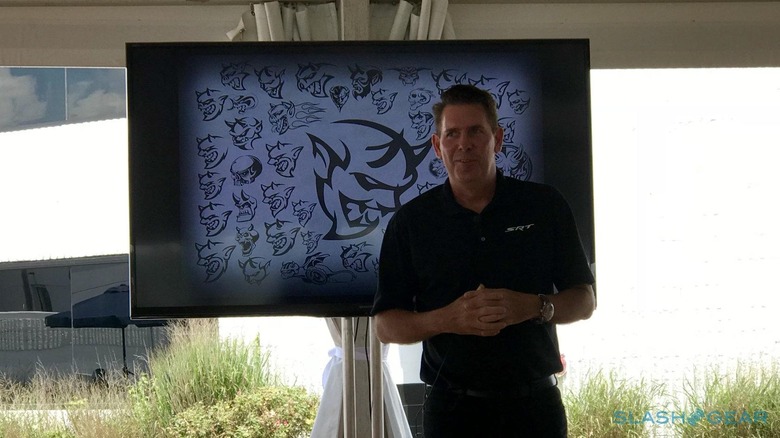
"Do the ears come forward and turn into horns?" Trostle explained of the designer's process. "Does the chin grow out? Or does the chin grow rearward, and does it get longer? How big is the mouth? Trying to put all that emotion and animation into it to represent what the cars is while still have this evolution family resemblance to the Hellcat."
If that sounds like a lot of effort for a badge, stick with me. Where for most cars the name is just something sweet cooked up by a marketing team, that's certainly not the case for the Demon: seldom has a name suited a car so well. Stare into the gaping maw of the grille, topped by the gigantic hood, and you're left in no doubt as to the massive horsepower and torque on offer.
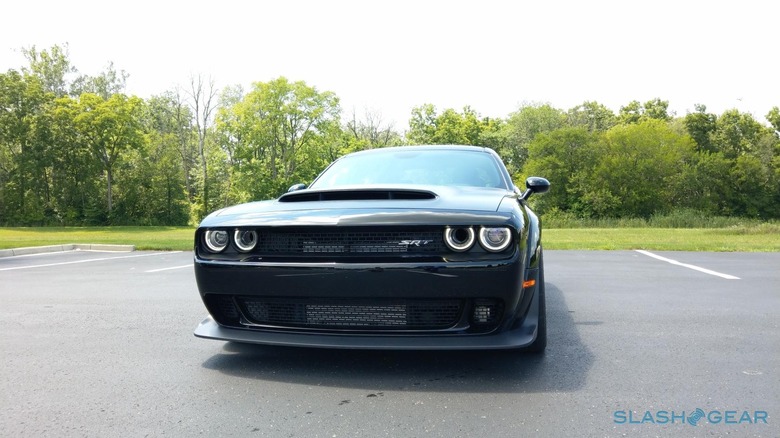
"I kinda look at it as the big middle finger to our competitors and to the people on the road seeing this thing coming," Trostle admitted to me, though he points out that form and function are still closely tied. The functional part derived from the team trying to figure out how they could "make the engine breathe" by pushing a much air through the hood as possible. Historically, drag racers have outrageous looking hoods but they're usually fairly crude in appearance. Not satisfied with that, Dodge's engineers set up to design a modern, more cohesive take.
The devil's in the details and the Demon spares none. Like the Hellcat, it has the air-catcher light, with the center of the headlamps open to funnel air through. This time around, there's an illuminated demon logo on the inside, if you dare get close enough to see. Best not be there when you smash on the gas pedal: the supercharger sucks in massive amounts of air as it winds up, sounding disturbingly close to what you'd associate with a jet engine.
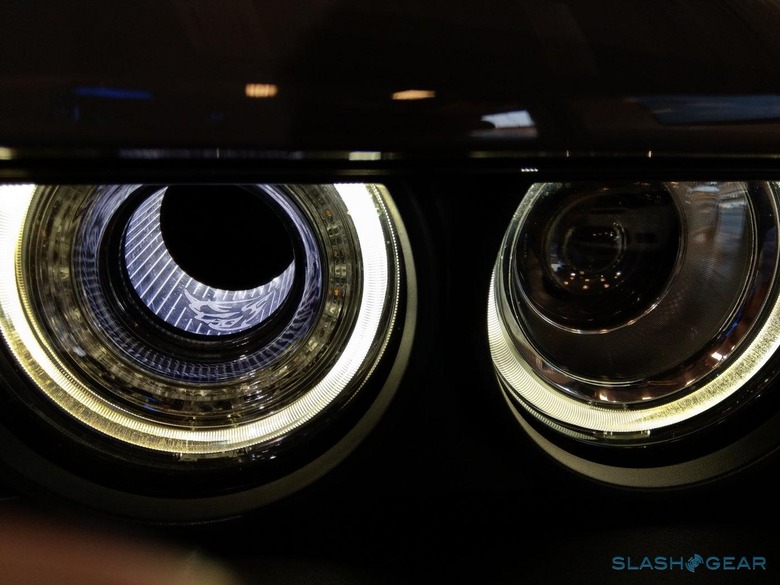
Rather than the bolted-on wheel flares of the typical DIY drag racer, Dodge decided to make the Demon's as cleanly integrated into the body as possible. That involved laser cutting both the front and rear fenders, and then and laser-welding in an armature that the flares could attach to. Keeping the aggressive stance going, there's also a new front splitter that both widens the fascia and integrates into the lower part of the flares, and is fitted with new amber side markers. "As heroic as what the horsepower was going to be," Trostle says, "so the hood, the flares, everything about it just had to be over the top."
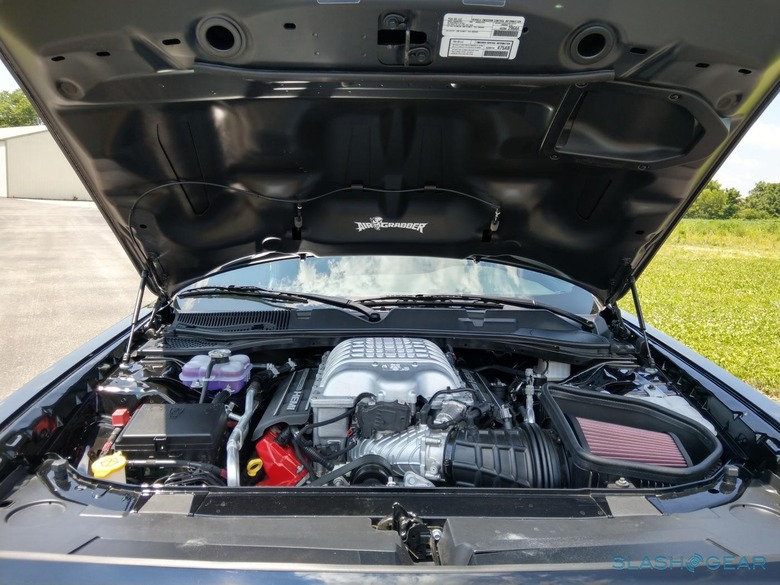
On paper, the Demon's horsepower and torque sound like Dodge just kept squeezing more out of the Hellcat's powertrain, but getting to 840 HP and 770 lb.-ft demanded some seriously clever engineering. "The powertrain team really had to be able to provide the power that drove these cars down the drag strip," Chris Cowland, director of Advanced and SRT Powertrain Engineering, explains. To do that, the team concentrated on airflow, getting the fuel into the engine at the right rate to meet its appetites, and heat reduction.
Turning the Hellcat engine into a Demon required twenty-five component changes. Boost pressure is up 20-percent, supercharger capacity increased from 2.4 to 2.7 liters, there were changes to the valvetrain and fuel injection, new pistons, and the conrods and crankshaft peaks increased peak revs from 6,000 rpm to 6,300 rpm. In the process, the supercharger gobbles up more air and fuel than any other production car: there simply isn't another engine in the world that can beat the 6.2-liter supercharged Hemi in fuel flow rate.
"There's about 500 lb/hr – 497 lb/hr to be precise – of high octane gasoline going into the engine at 6,300 rpm," Cowland says. Putting that into perspective, when using the high-octane calibration or 100 octane fuel, there's roughly 1.4 gallons of fuel pumped into the engine per minute to generate the 840 HP. If you're finding that hard to visualize, your typical shower head delivers around 2 gallons per minute.
That's tough to deal with when you're building a track-day special that arrives on a trailer. It's doubly difficult when you also need to pass the emissions and noise regulations a street car faces. "We run a fairly novel twin fuel pump system where we run two very, very different fuel pressures," Cowland explains, "a low pressure for precise injector control and bump up to a high pressure to get enough fuel into the engine."
"In the 9.5 to 10 seconds it takes to run down the drag strips," the engineer says, "5,000 liters of air will go through the engine. If we were to hook the intake up to the cabin in the Demon, after 800 feet, we'd have taken all the air out of the cabin for the driver."
Happily the Demon won't asphyxiate you, at least not directly. All that combustion, though, produces no small amount of heat, and cooling down the engine and all the rest of the components drag run after run is no small feat. Dodge's solution is a liquid-to-air system, a first for production cars, which alone results in a 10 degree centigrade reduction in air charge temperature. It alone squeezes 10-15 more horsepower from the drivetrain. After a run, while the car sits idle, normally you'd suffer heat soak: to prevent that from happening, the after-run pump switches on to keep circulating coolant through the intercoolers rather than powering up the fan. Together they prevent the various components from heating up, so that your second, third, fourth and subsequent runs remain consistent.
The good news is that it all works astonishingly well, as I witnessed first hand watching each Demon sprint down the drag strip after the other without any issues, all the time maintaining consistent results. I shouldn't have been surprised: Dodge ran over 1,100 drag runs in its tests, and more than 522 passes on the first axle alone.
When you're facing a quarter mile, though, the knowledge of all that engineering magic somehow takes a backseat. Instead, I was all too aware of the warning we'd been given by Jim Wilder, Vehicle Development Manager for Dodge Challenger SRT/Charger SRT Engineering. "If you lose grip down the track, lift," Wilder told us, sternly. "If we wreck a car, people are going to be really angry, or yell at you. The guy next in line to get into that car will get really angry. Unless you're really hurt we're going to yell. A lot."
No pressure, then. For my first run I rode shotgun – Dodge had helpfully installed a seat there, so I didn't have to sit on the floor – to get a thorough walkthrough. Then it was time for me to take the wheel myself.
Growing up watching drag racing on TV, I always thought that it was an easy sport. How hard can it be to slam on the gas pedal when the light flicks to green, right? Wrong. Dead wrong.
If you want to have a proper launch, using the best launch method in the industry, that means using transmission brake or transbrake. Transbrake works by internally locking the 8-speed automatic transmission, yet still allowing the engine to hold low revs. It's something that has never been done before on a production car, but you guessed it, it's fitted on the Demon.
I'm not going to lie, I struggled like an infant trying to walk for the first time. I understood the mechanism and process of what to do, but when it came time, I'd inadvertently leave out a step or two. Here's the drill: to engage transbrake you have to pull both shift paddles back simultaneously, then hold the brake with your left foot while reving up and maintaining the engine at around 1,800 rpm. Then you release the paddles and the brake while keeping the revs up, and enjoy the end of the strip suddenly getting a whole lot closer at a stomach-twisting pace. Too often, though, I found myself letting off both the brake and the gas pedal: it's very much like a dance but, once you get the steps right, you're in for a treat. Drop the second shift paddle, slam on the gas, and hold on for dear life.
In "Drag Mode," the suspension is tuned for max-pull right off the start, plowing on 1.8G of force that's more than capable of lifting the front end and tires right off the ground. Since suddenly they're responsible for a whole lot more work than the typical car requires, the rear tires aren't just shod with any old rubber. Instead, they're Nitto 315/40R18 drag tires, so you know they're going to stick.
The ride is unforgettable. The Demon rages forward before you can yell out "wahoo". Setting fear aside, it's possible that within those 10 seconds could be the best ride of your life inside a car.
Are Dodge's claims of a road-ready drag star legit? While others took their turn slamming the Demon down the strip, I pointed that angry grille at the road to see how this 808 HP beast handles away from the track. Yes, I did say 808 HP: if you want the full 840, you'll need super premium race fuel. The top grade gas you'll find in your local specialist station gets you the "lower" figure, though it's hardly a compromise you'll notice in everyday use. A button on the dash switches between the two settings.
Either way, it's pretty much business as usual if you've driven a Hellcat. The exhaust note is louder, as is the airflow whine of the beefier supercharger. Still, the ride is oddly comfortable, and you still get all the creature comforts in the cabin along with features like adaptive dampers. There are more refined ways to cruise, certainly, but none of them will hold a candle to the Demon in its native habitat.
This may be a production car, but it'll still be a rarity. With only 3,000 Demons planned for the US – and an additional 300 to be offered in Canada – even if owners do take them out on the road you'll be lucky to catch sight of one. Fewer still will likely ever actually hit the drag strip. For all that engineering and exclusivity, the starting price of $84,995 makes me wonder if Dodge inadvertently missed a figure off, though I'm not complaining. The front and rear seats are a mere $1 option, while the Demon Box – which includes all the drag-specific extras you'll need to fit for the track – is a token $1 too. Trust me, they're the extras you want to check, though if you want to officially race at the NHRA you'll also need to have a roll cage fitted.
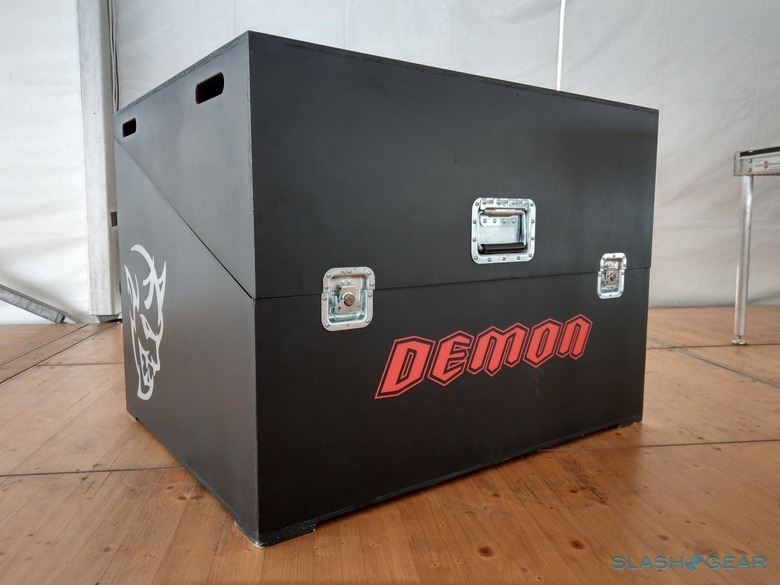
Back when I drove the SRT Hellcat for the first time, I wondered where Dodge could possibly go next with the Challenger. Somehow, through a combination of engineering obsession and that "big middle finger" motivation, the automaker has outdone itself again. With its ridiculous power, jaw-dropping attention to detail, and not least its ability to legitimately inspire terror in a straight line, the 2018 Challenger SRT Demon is excessive in all the best possible ways.

